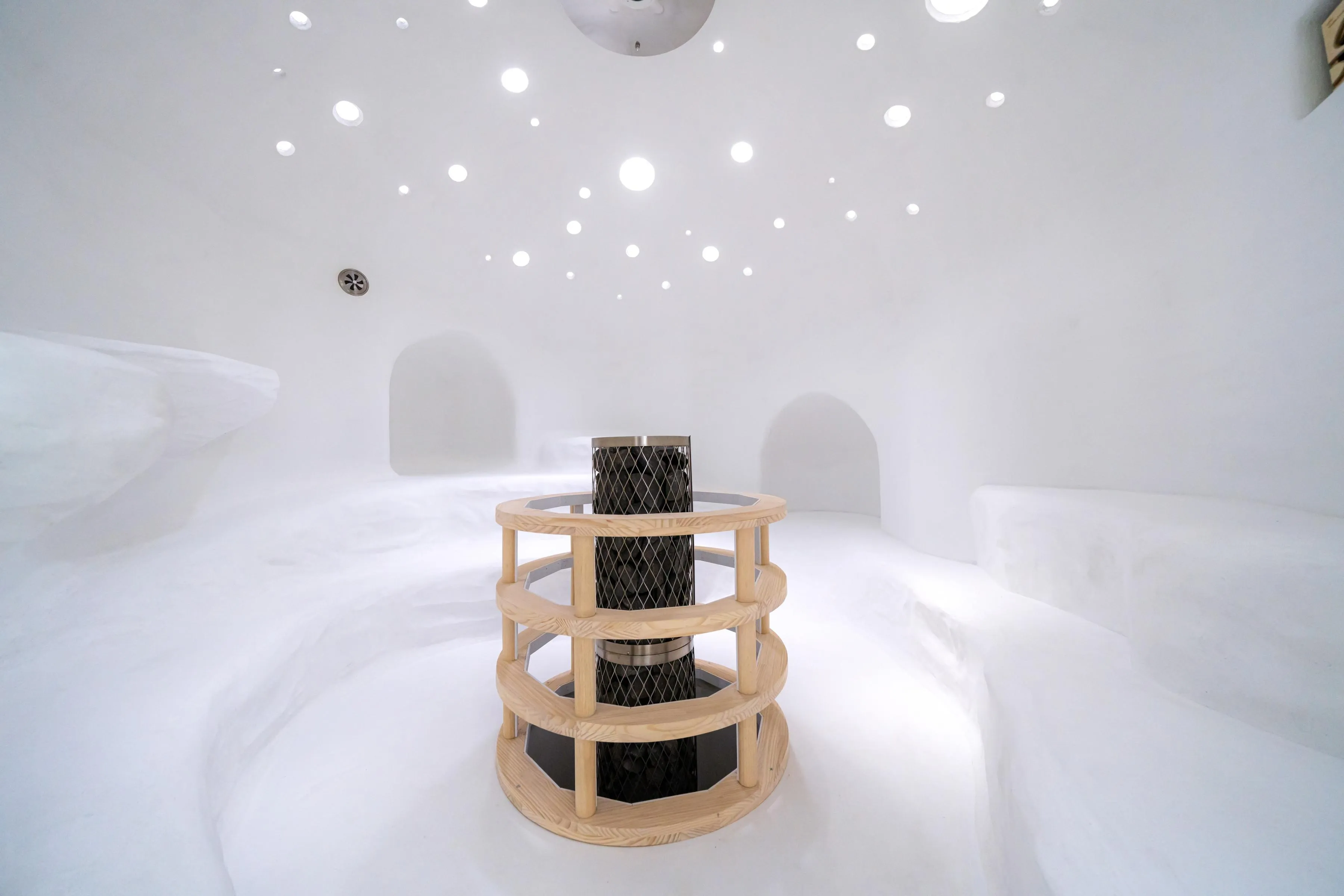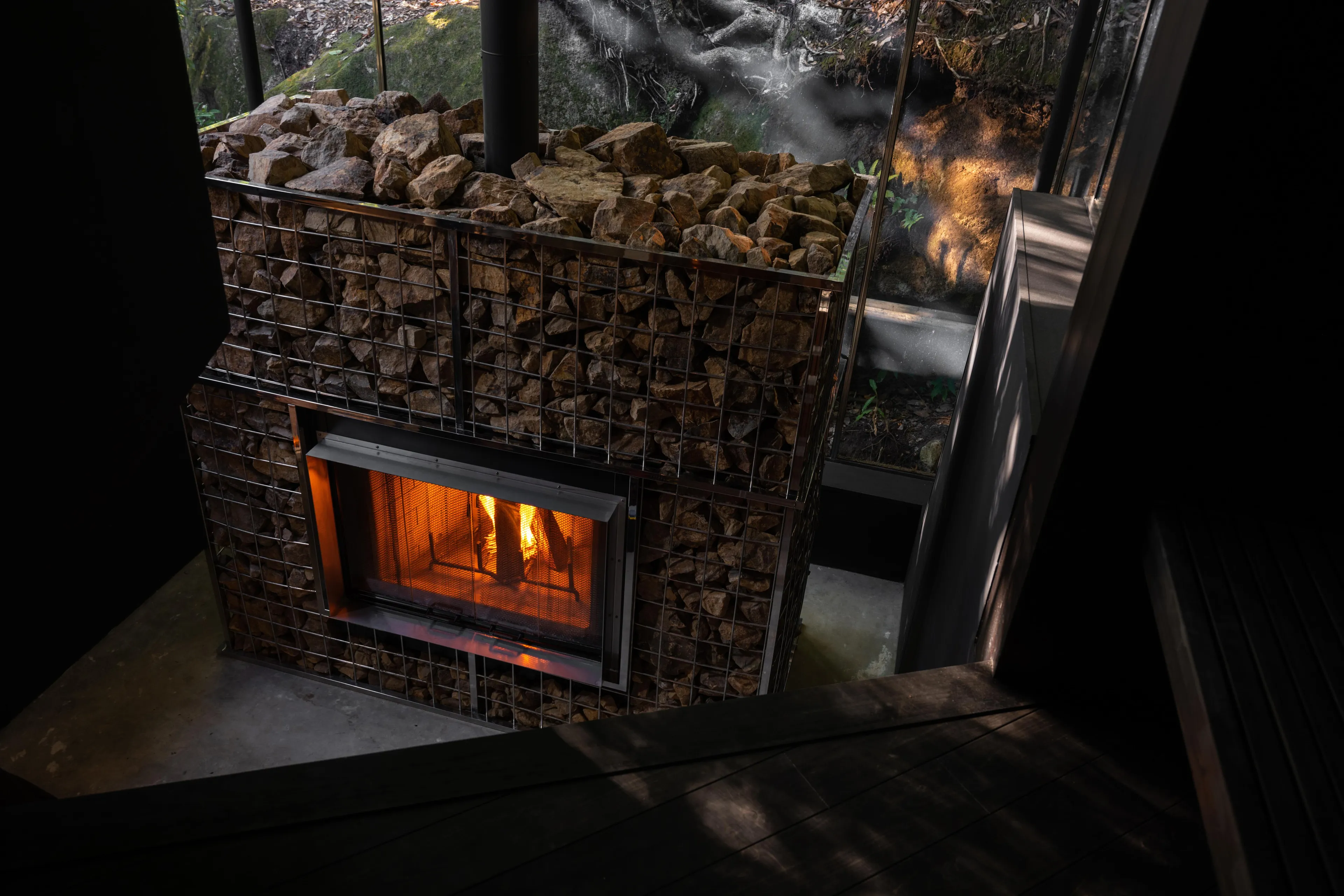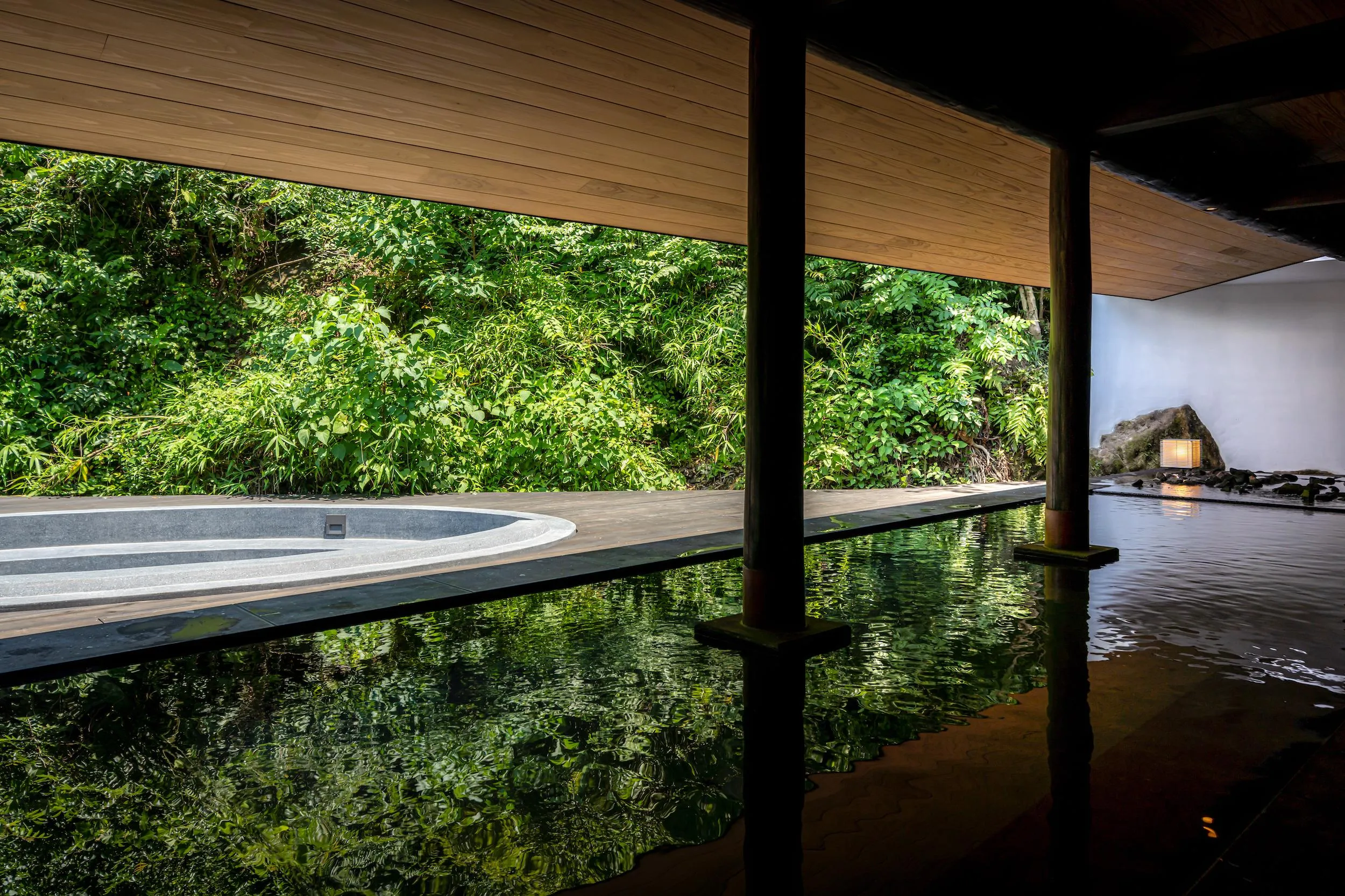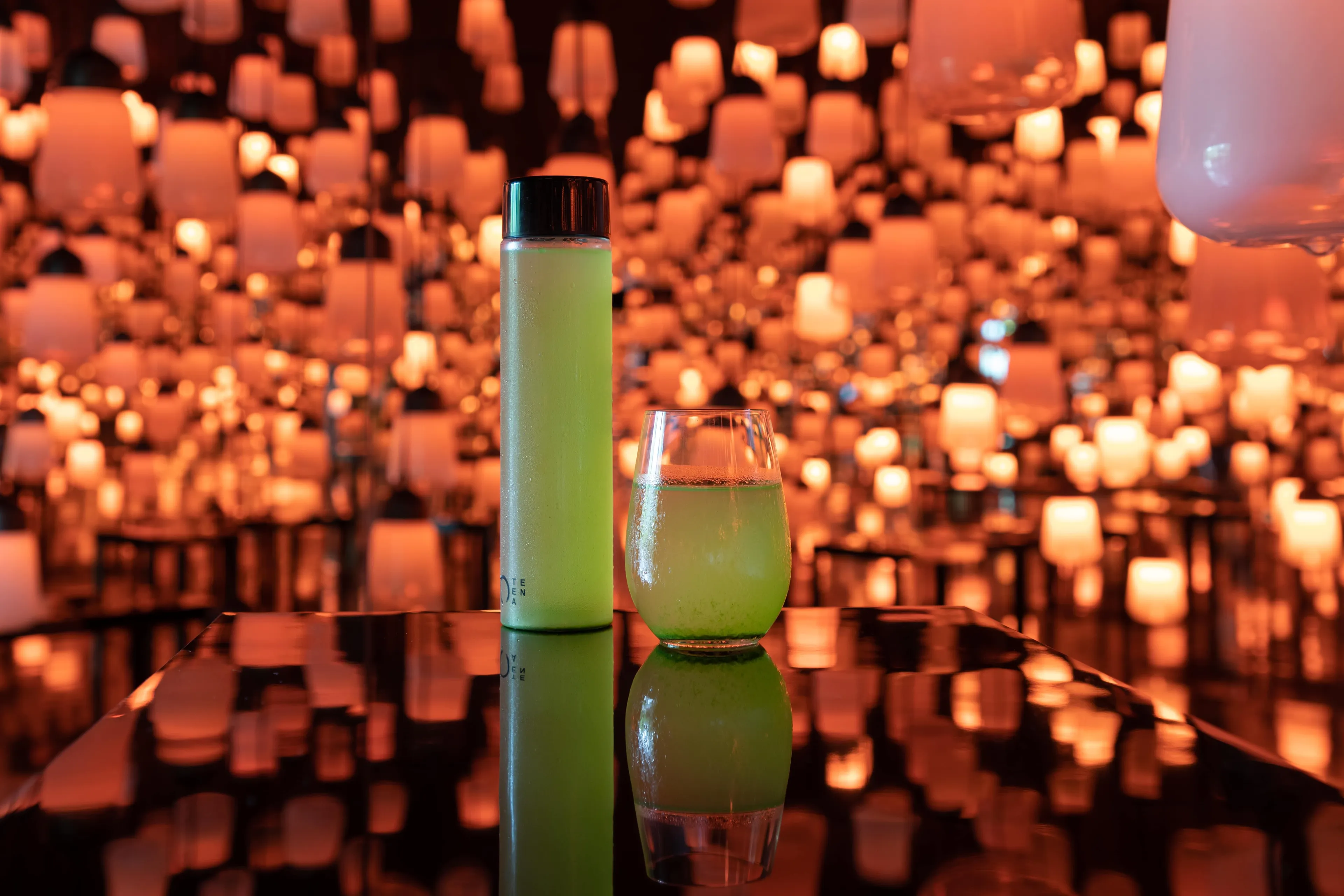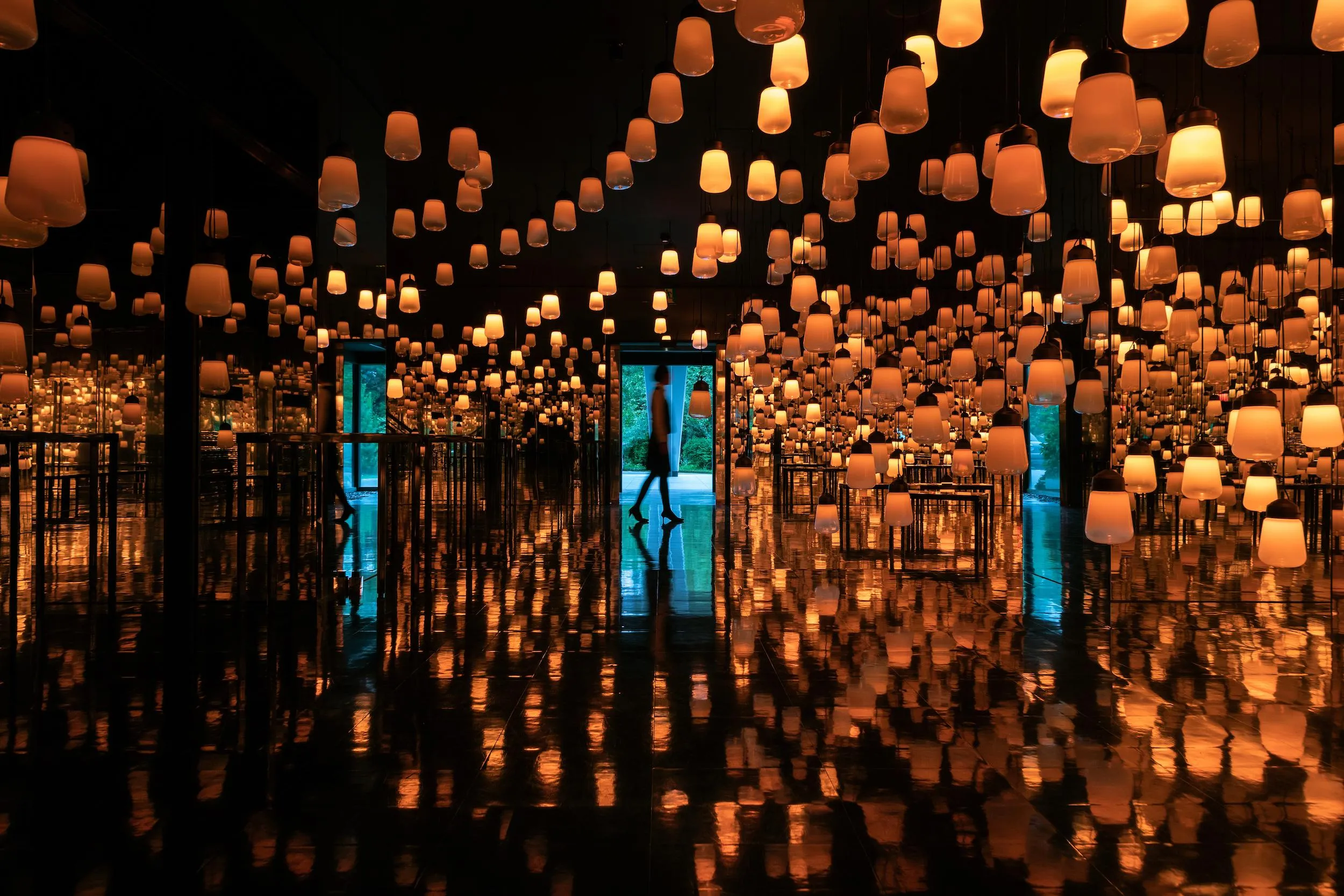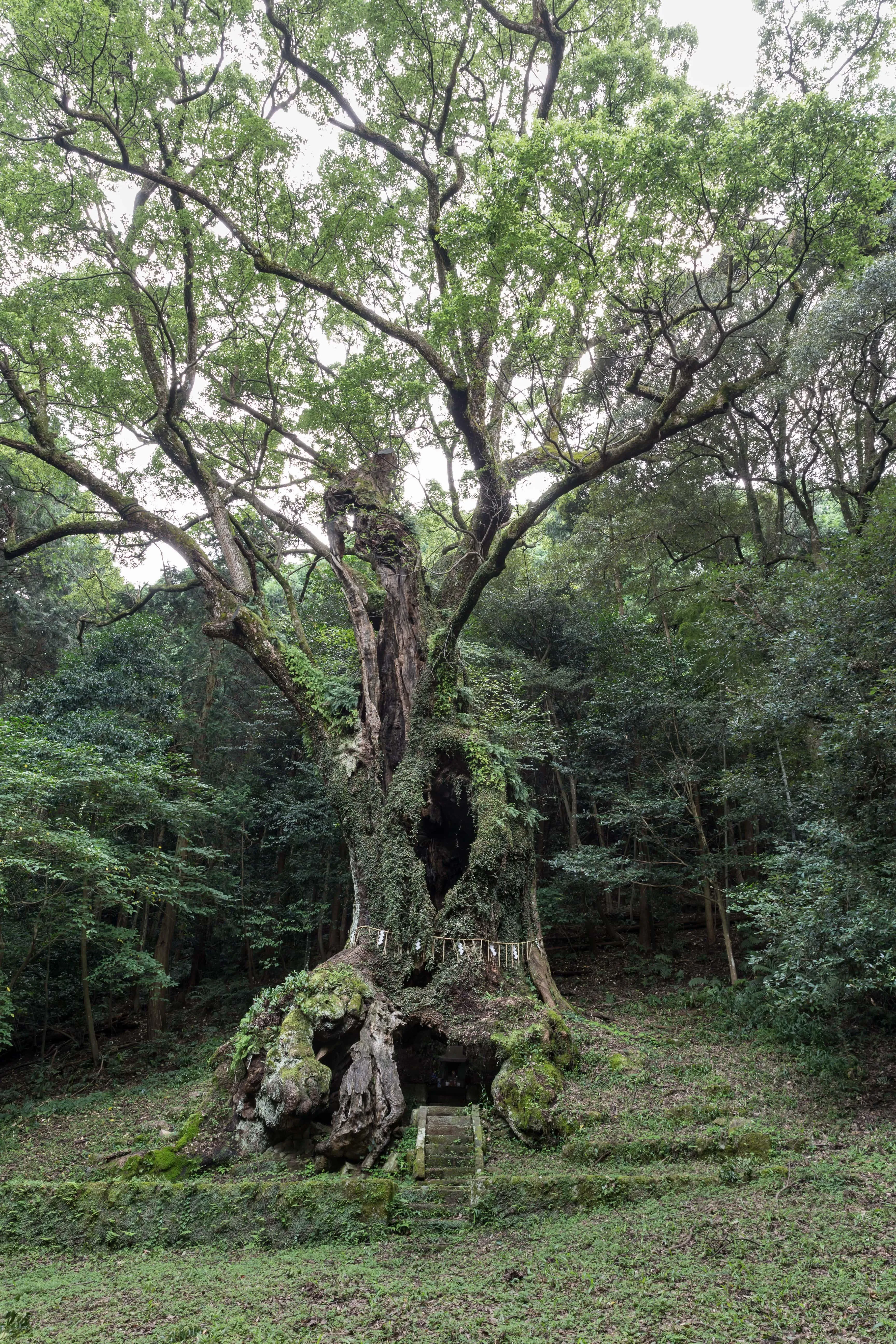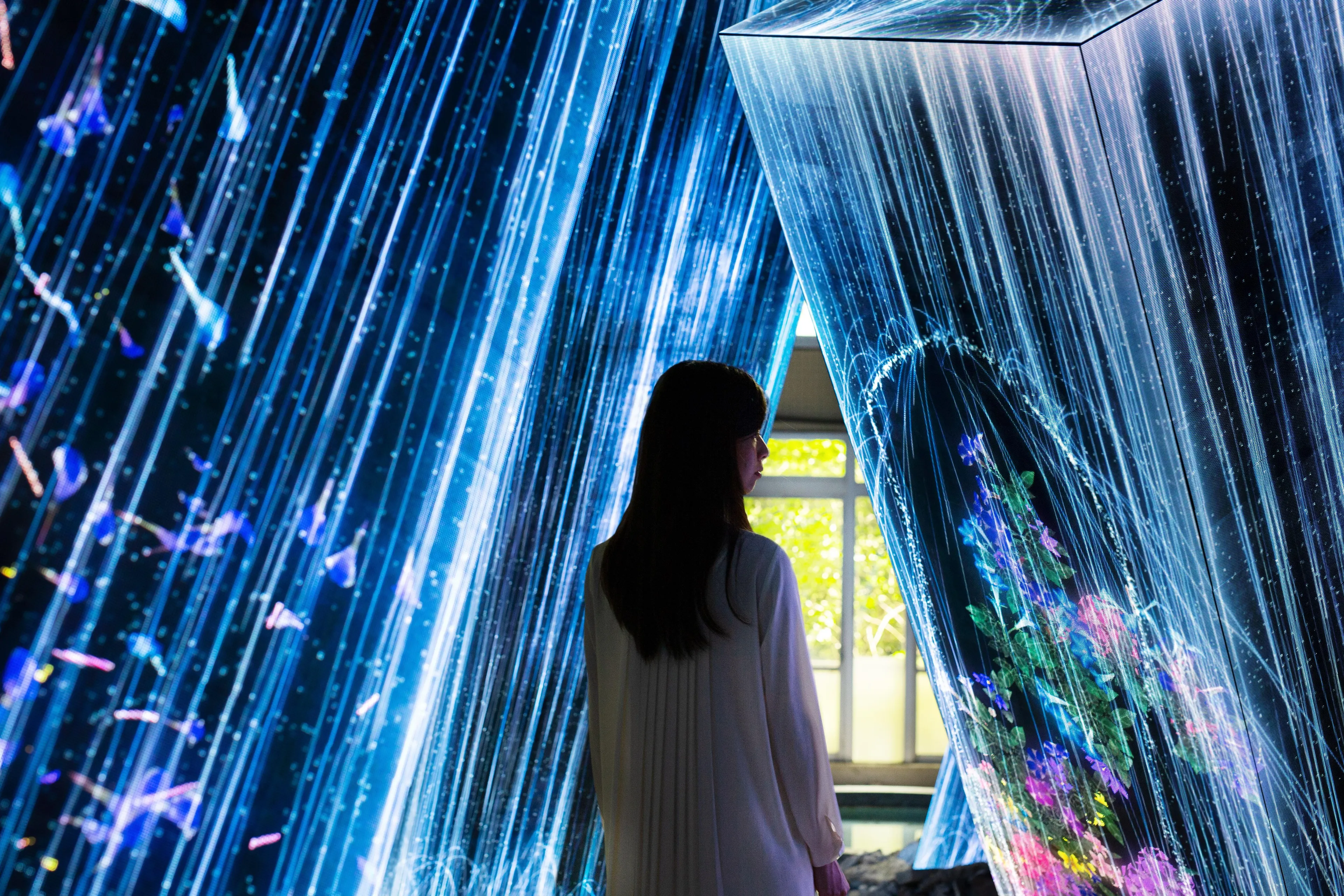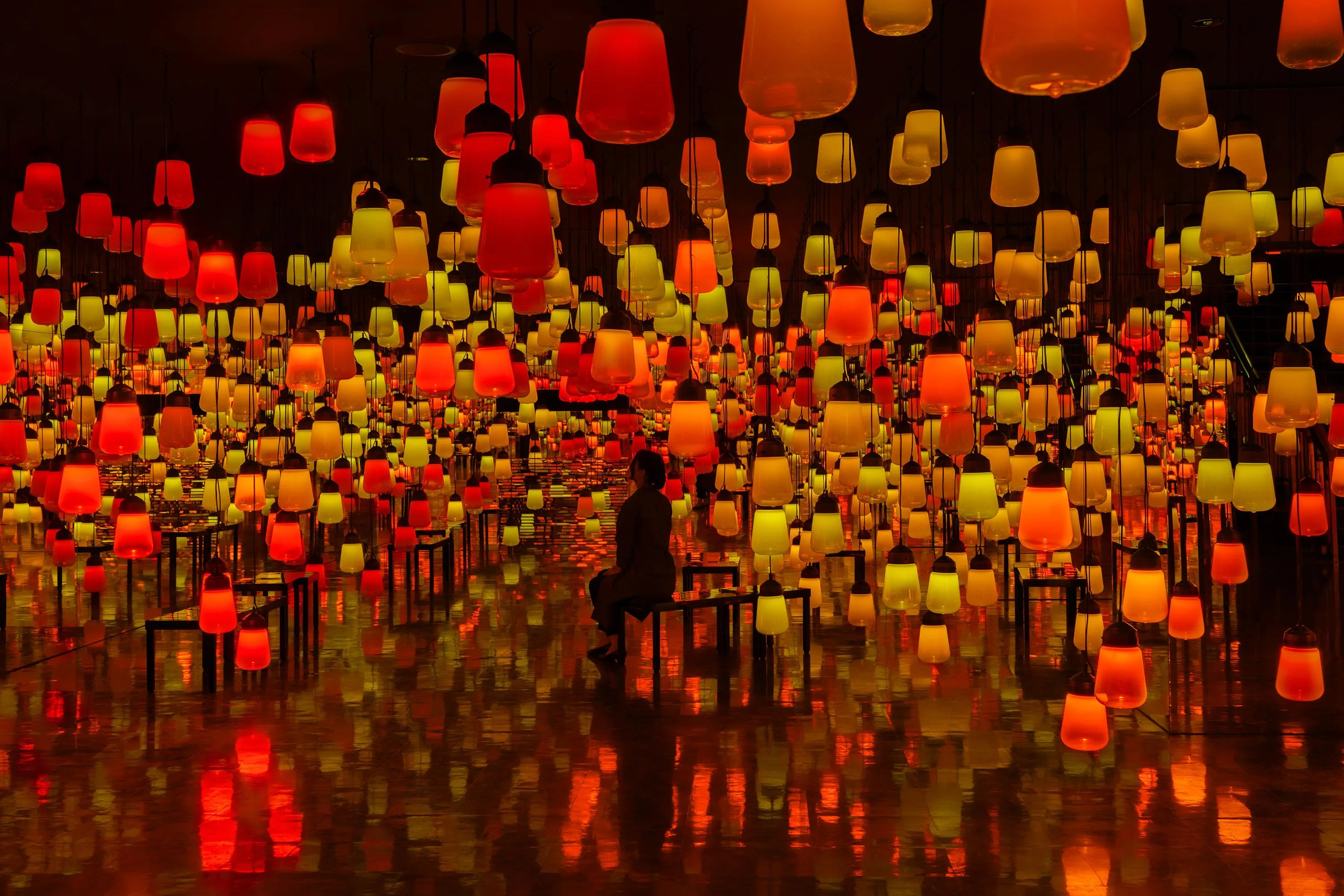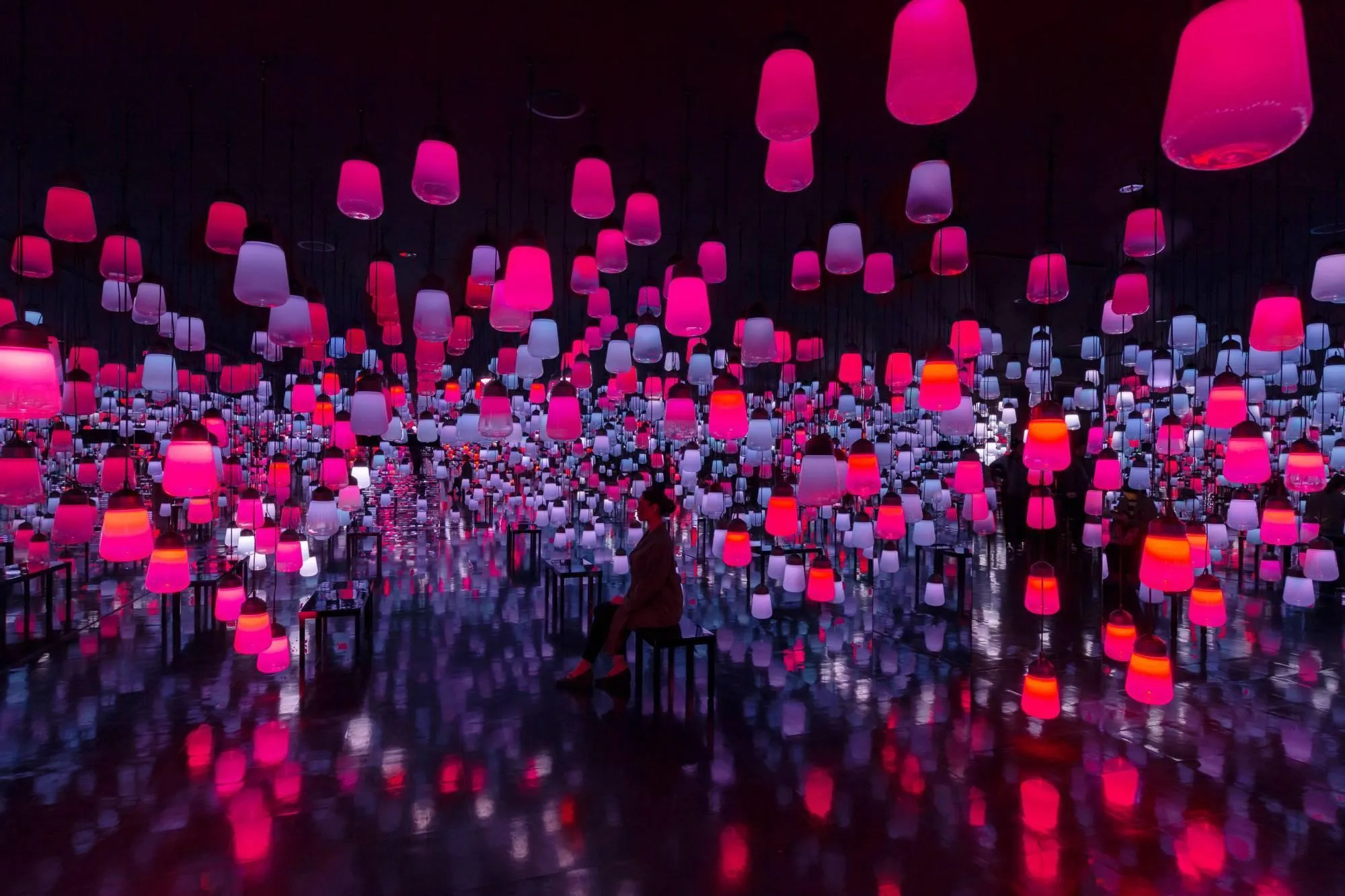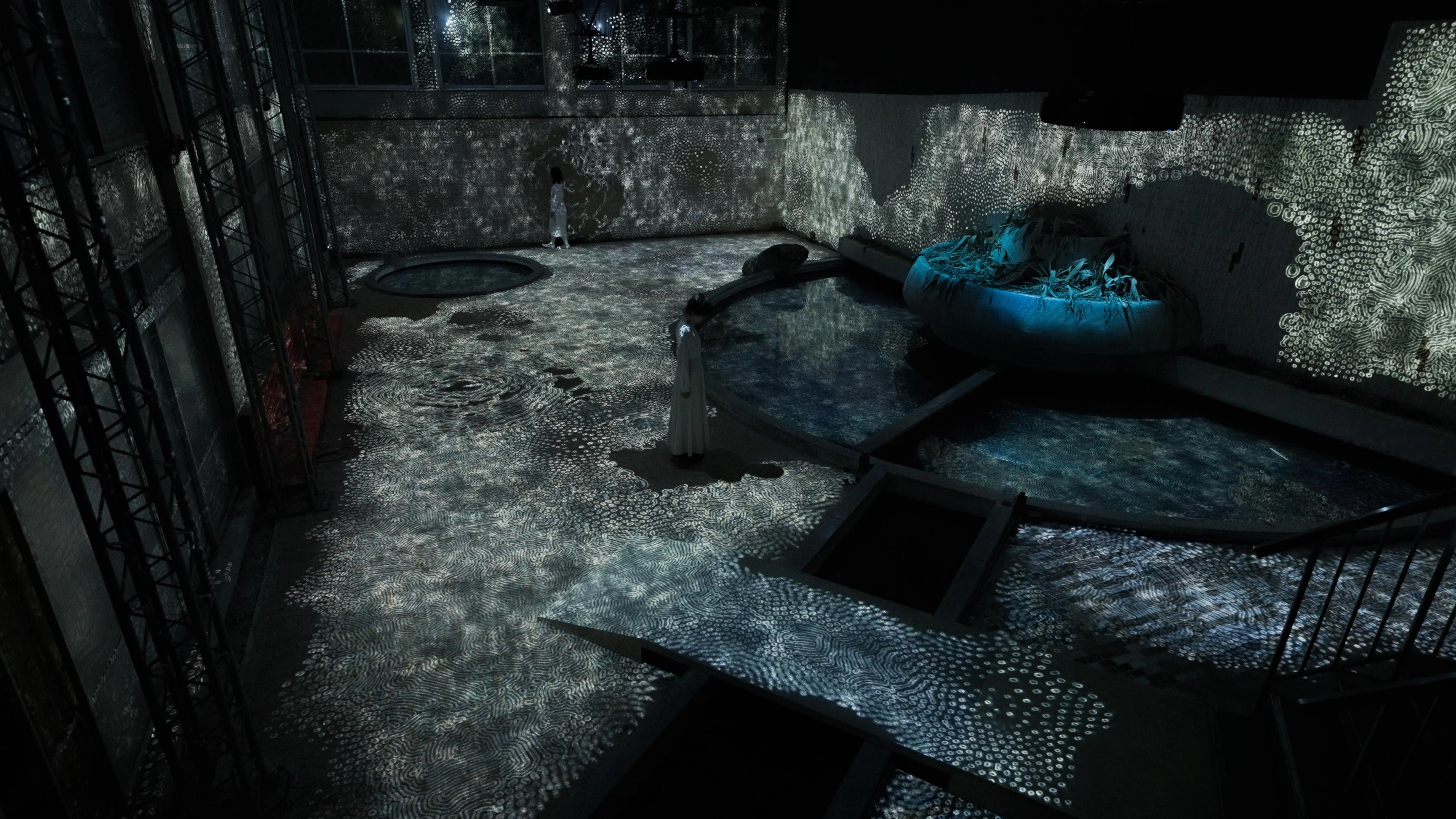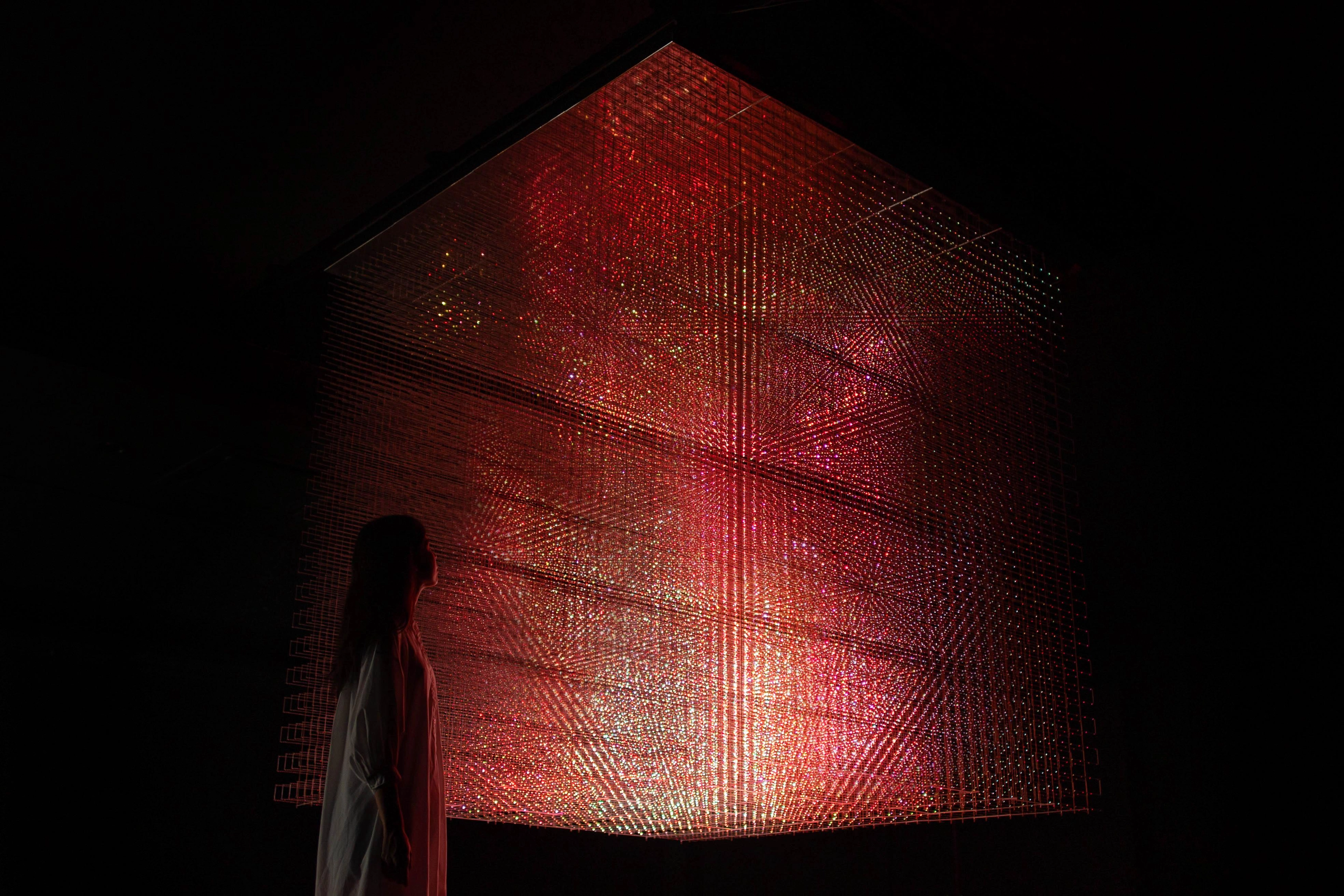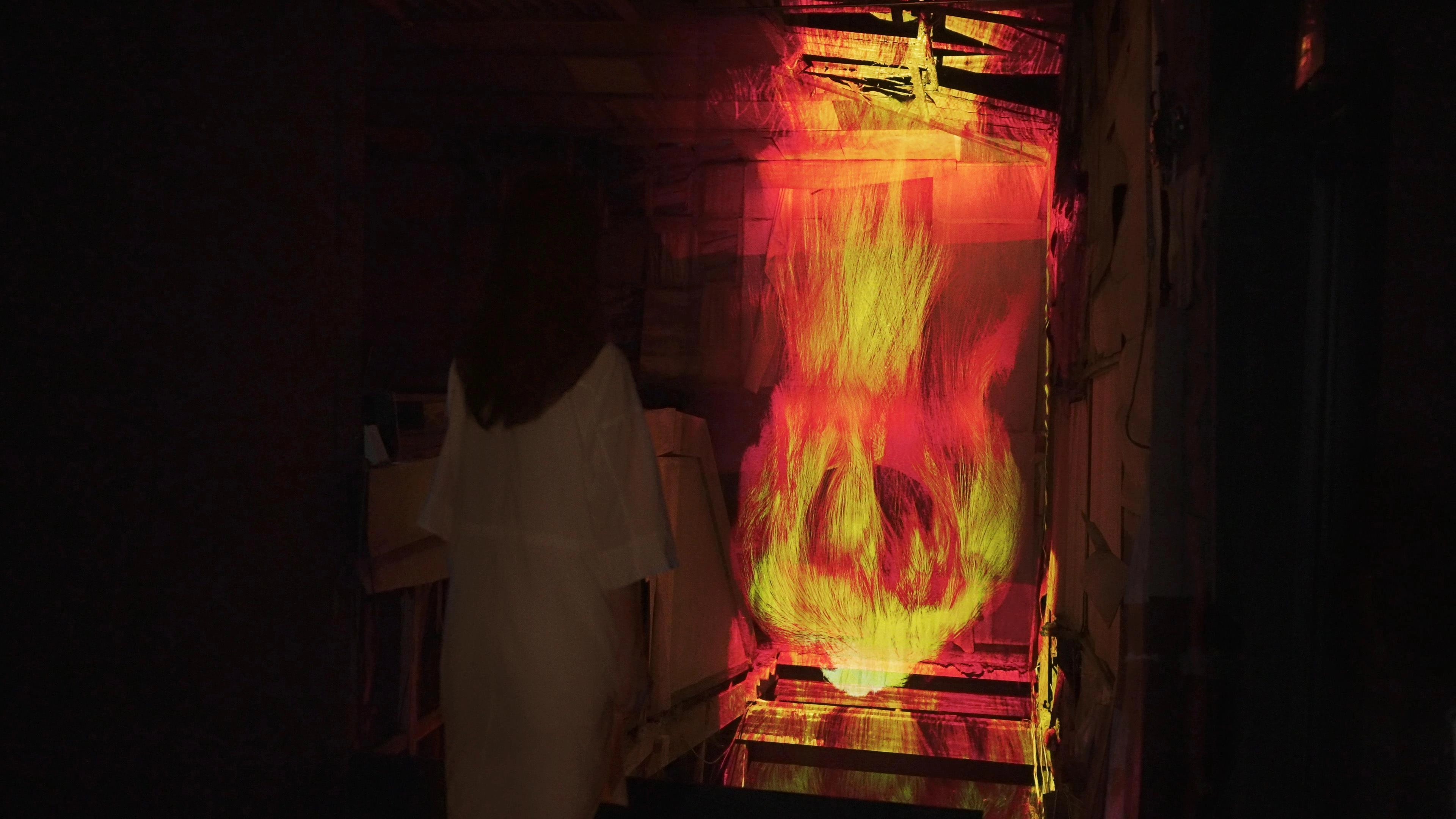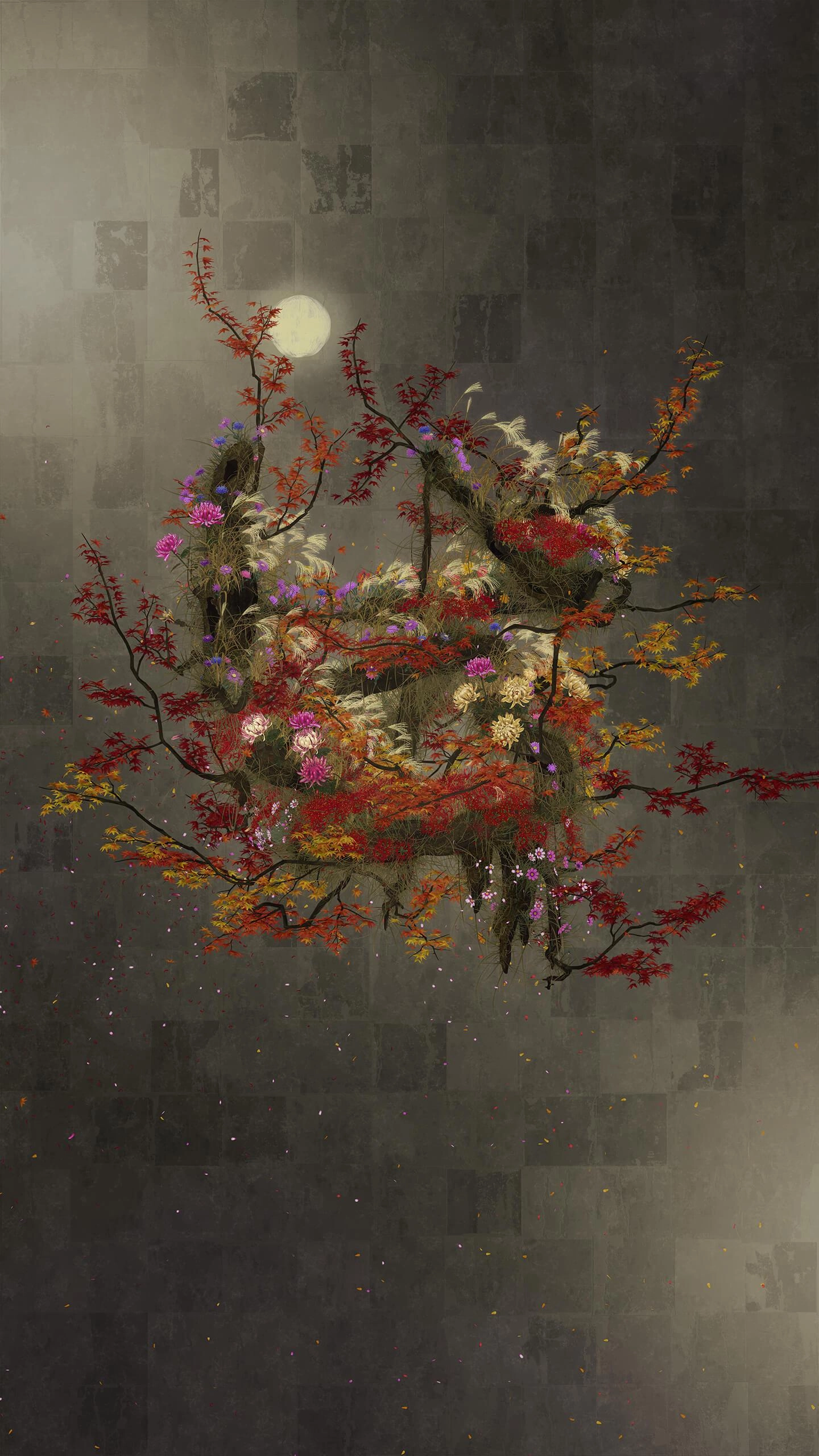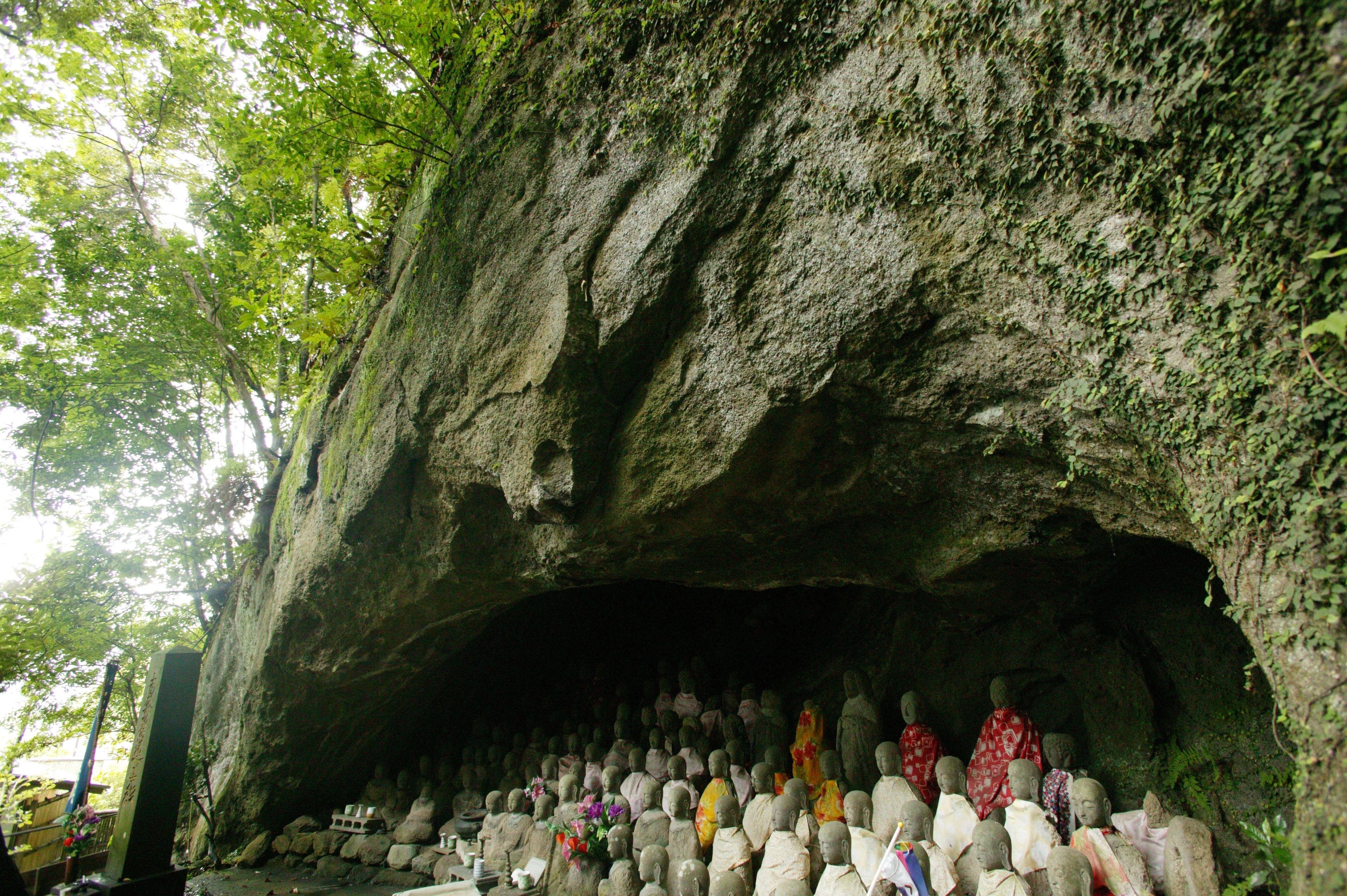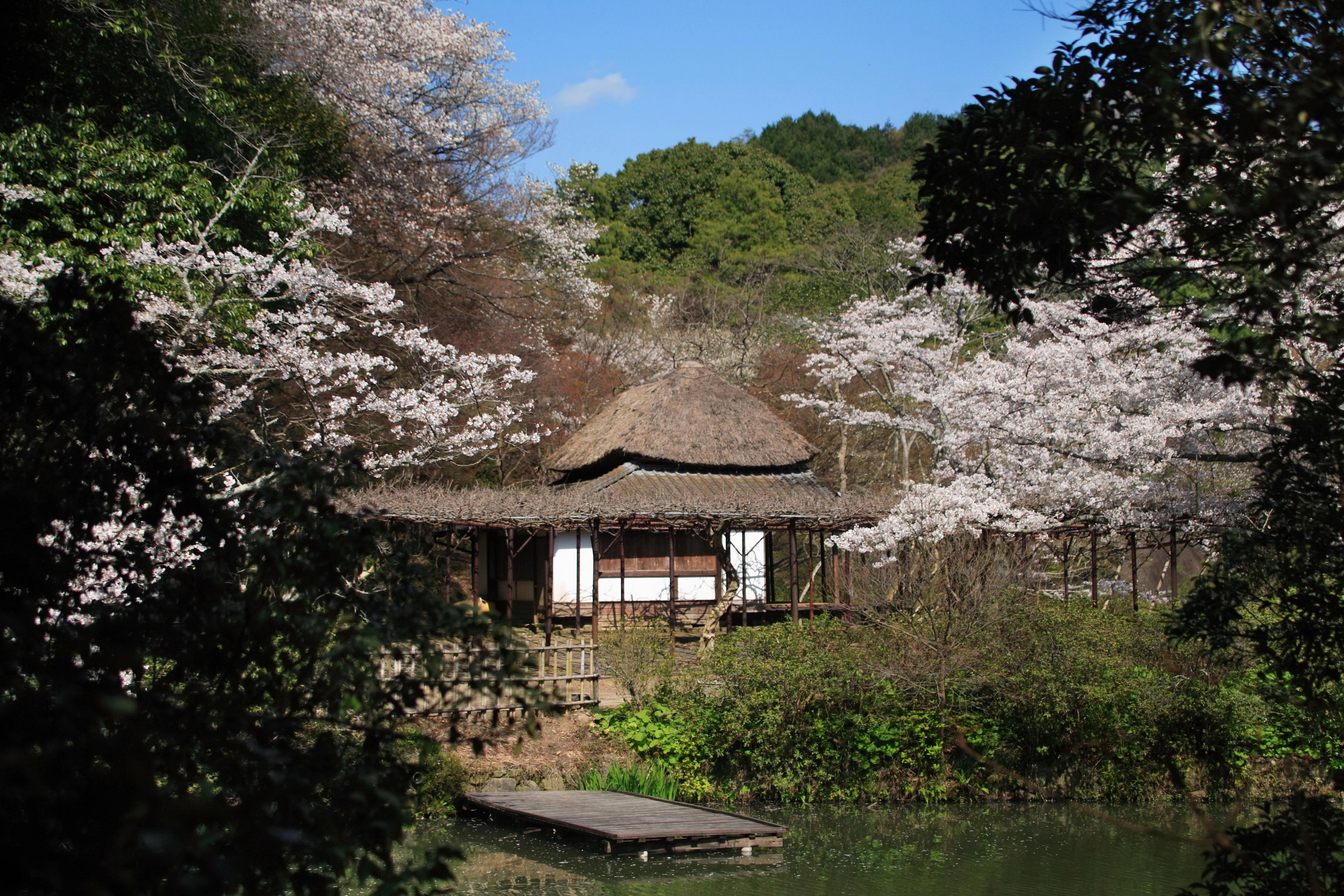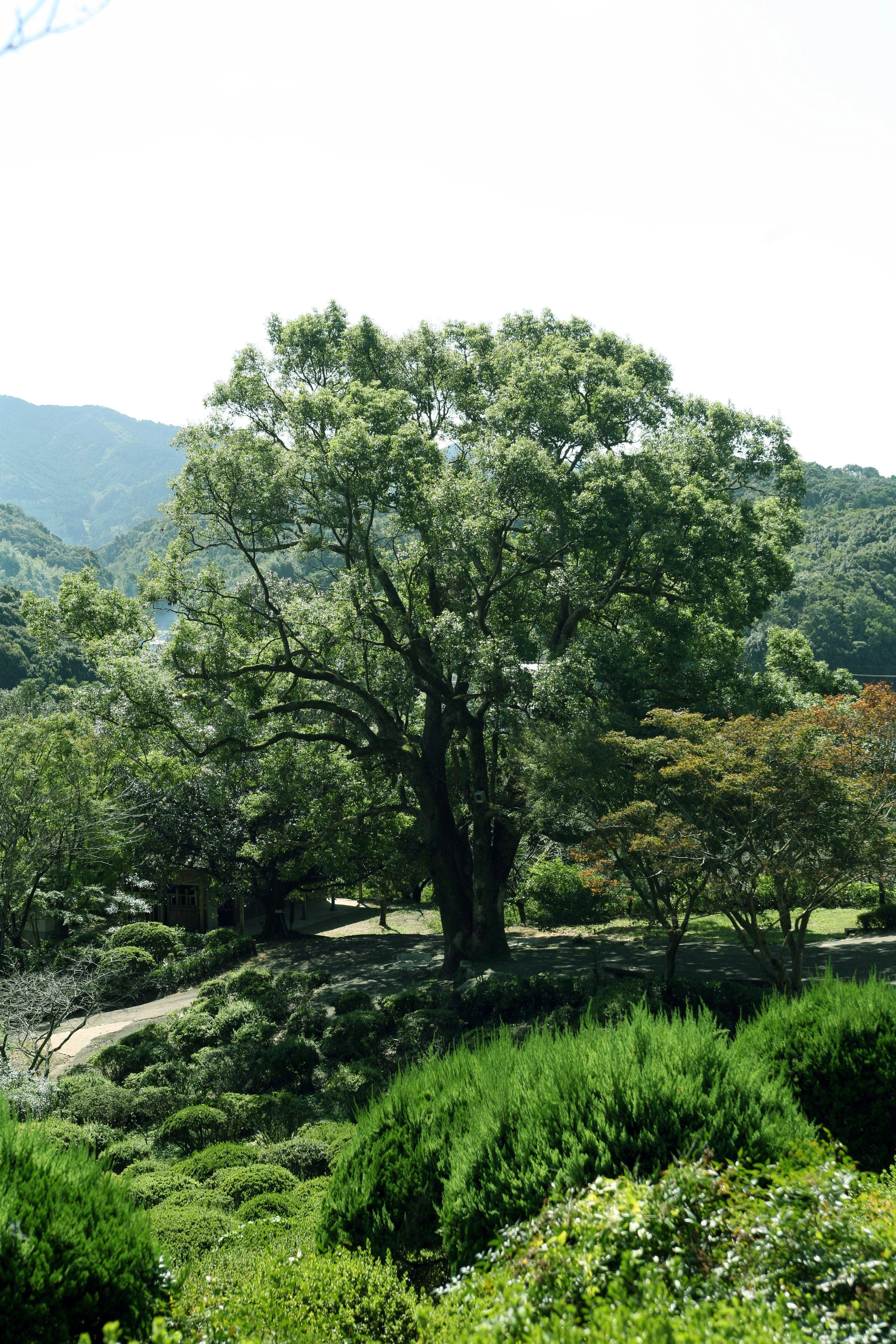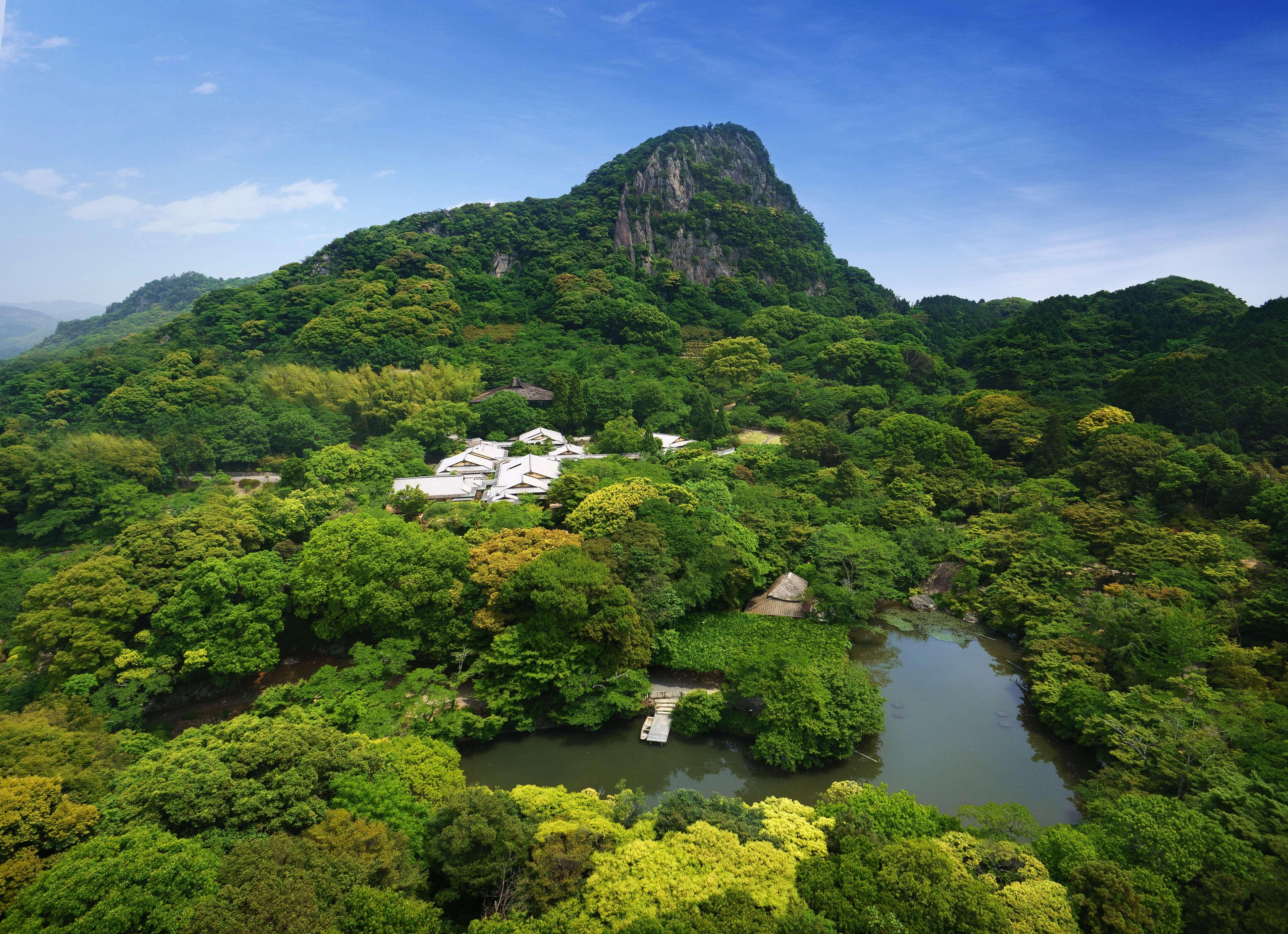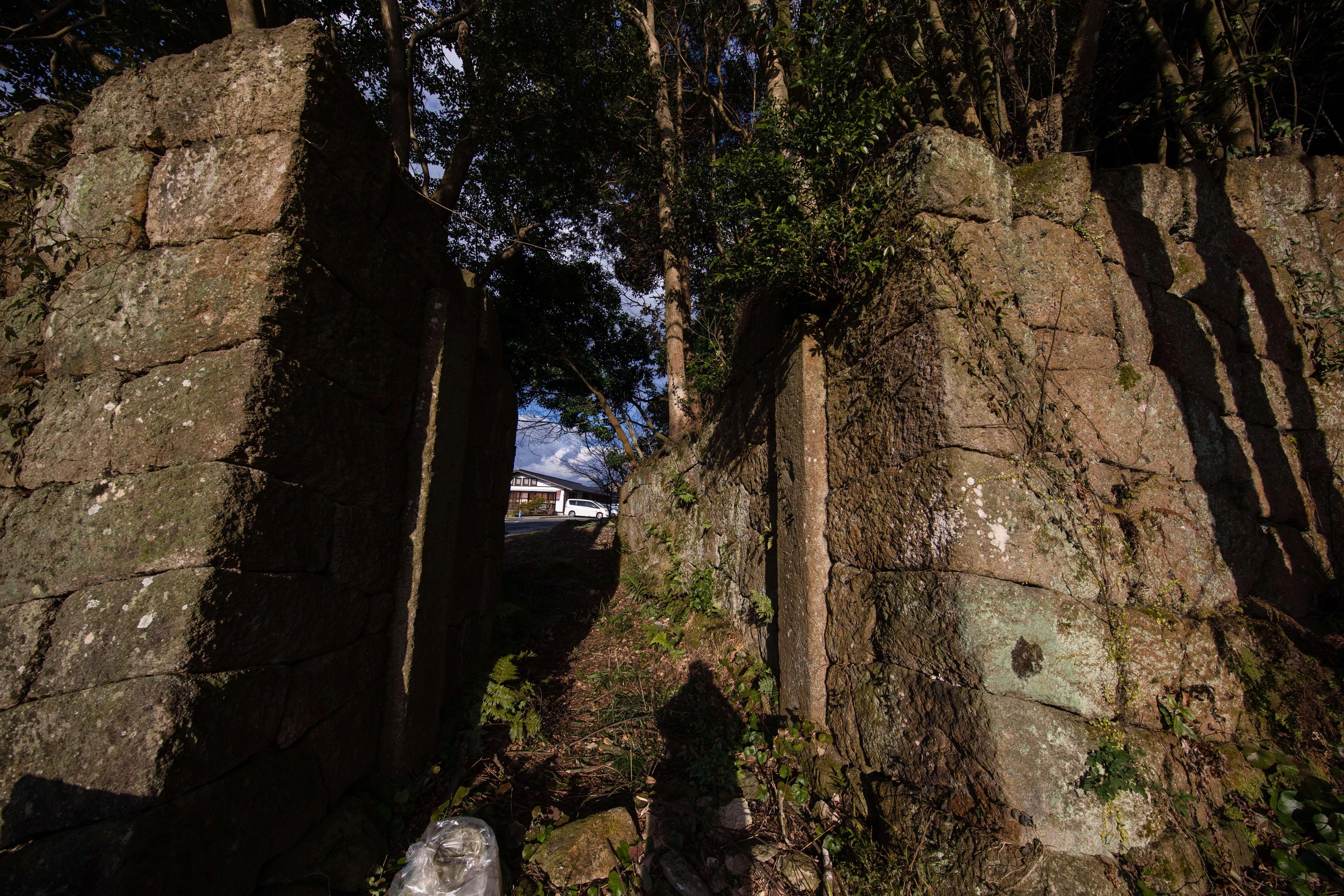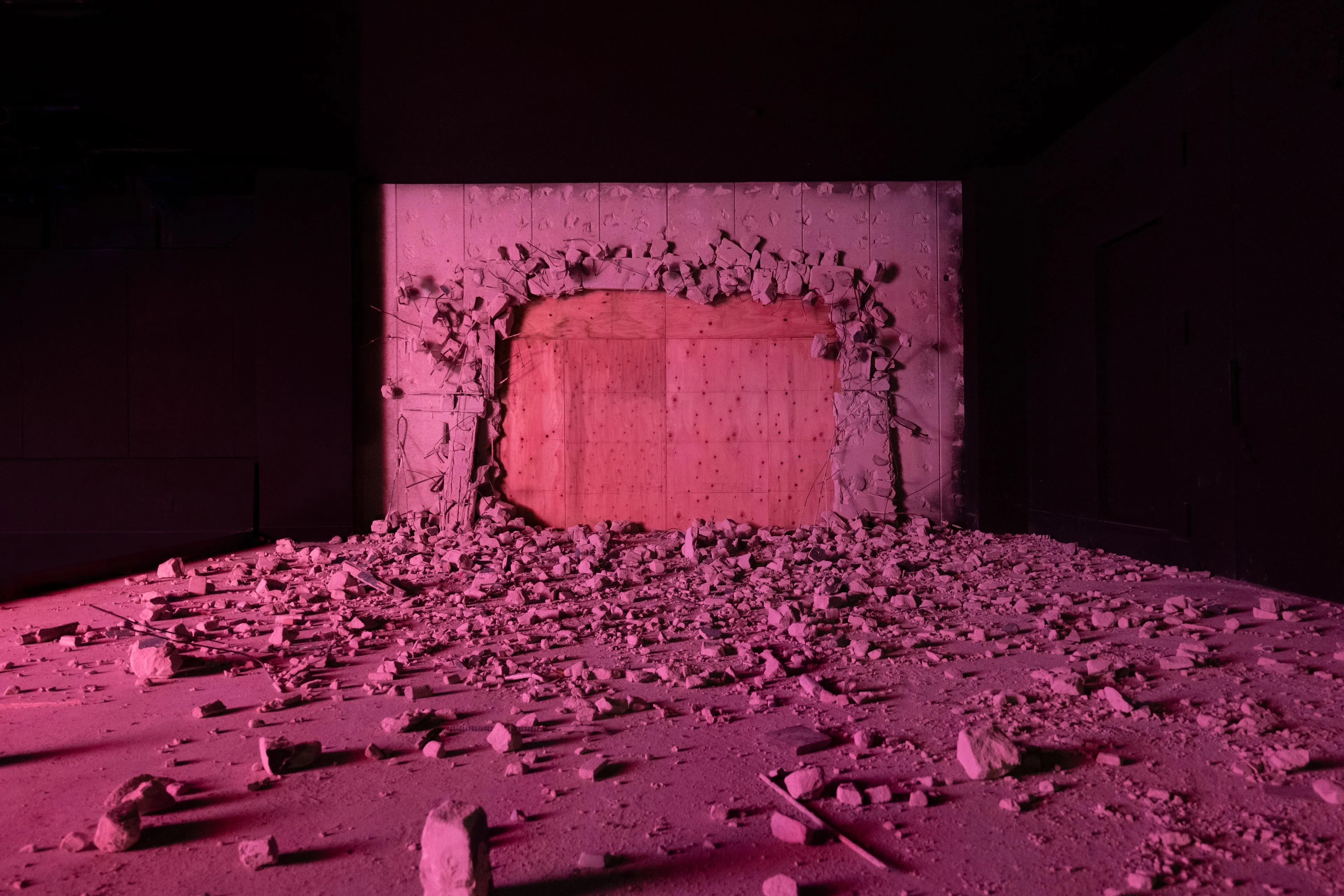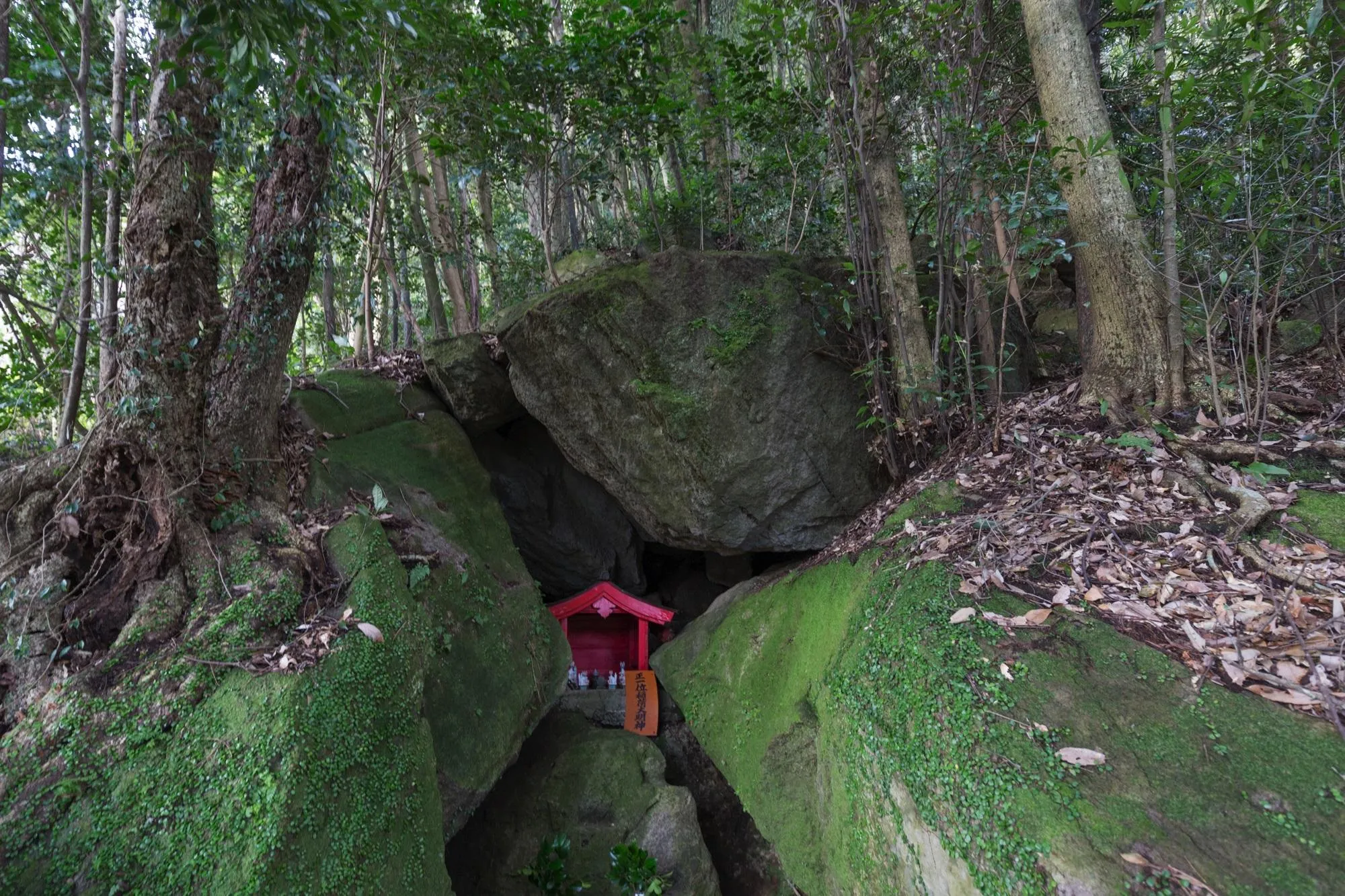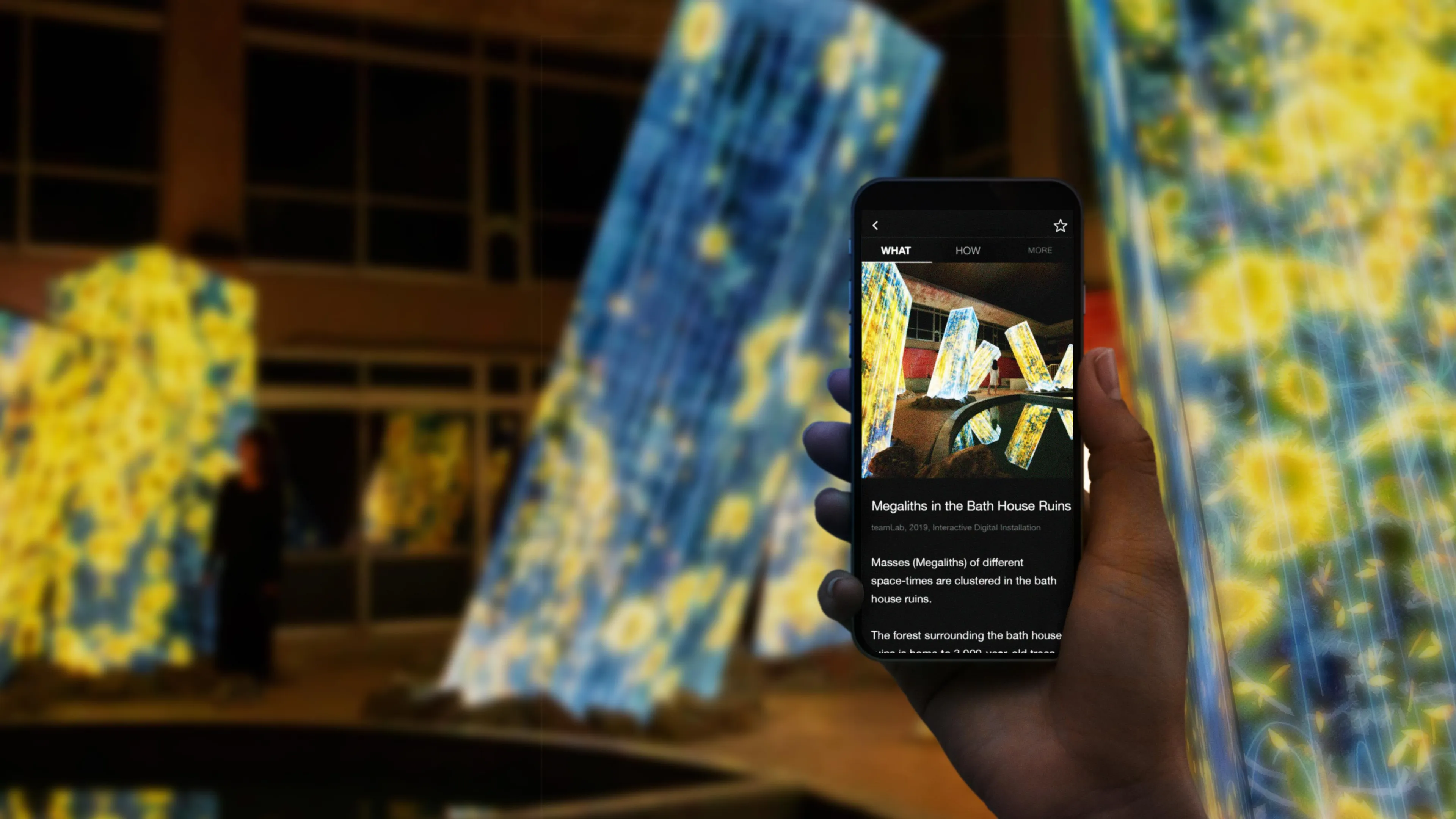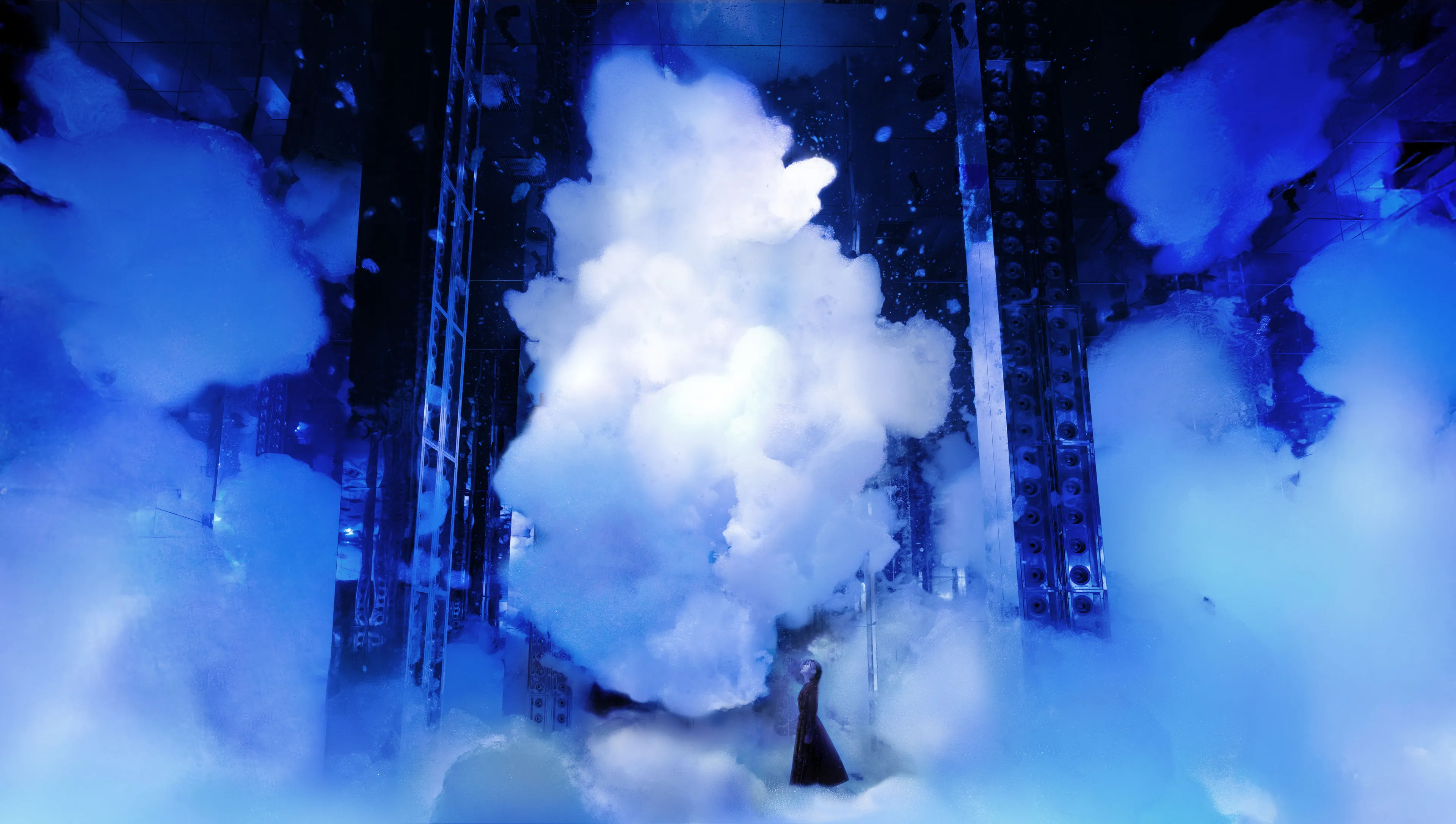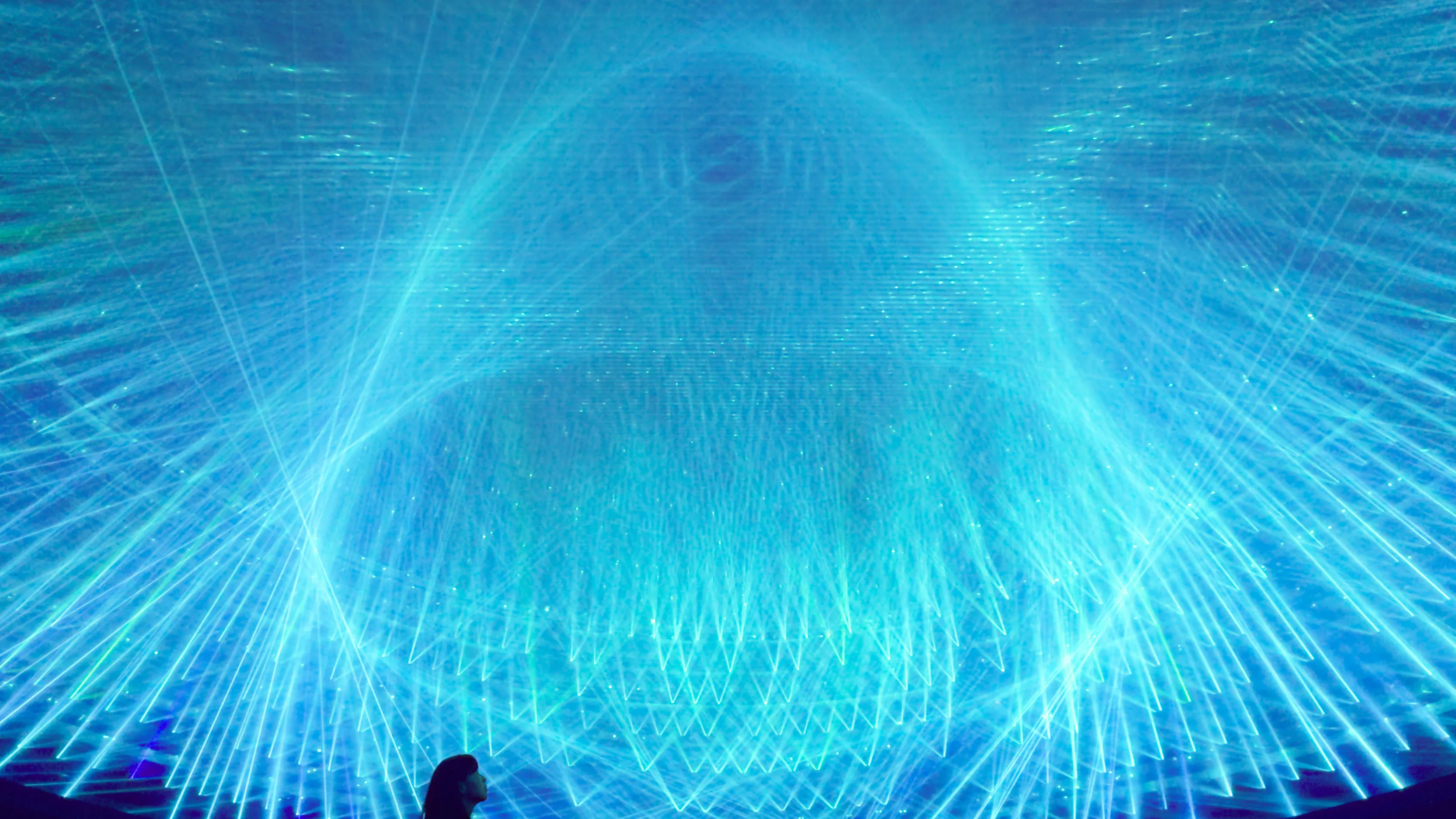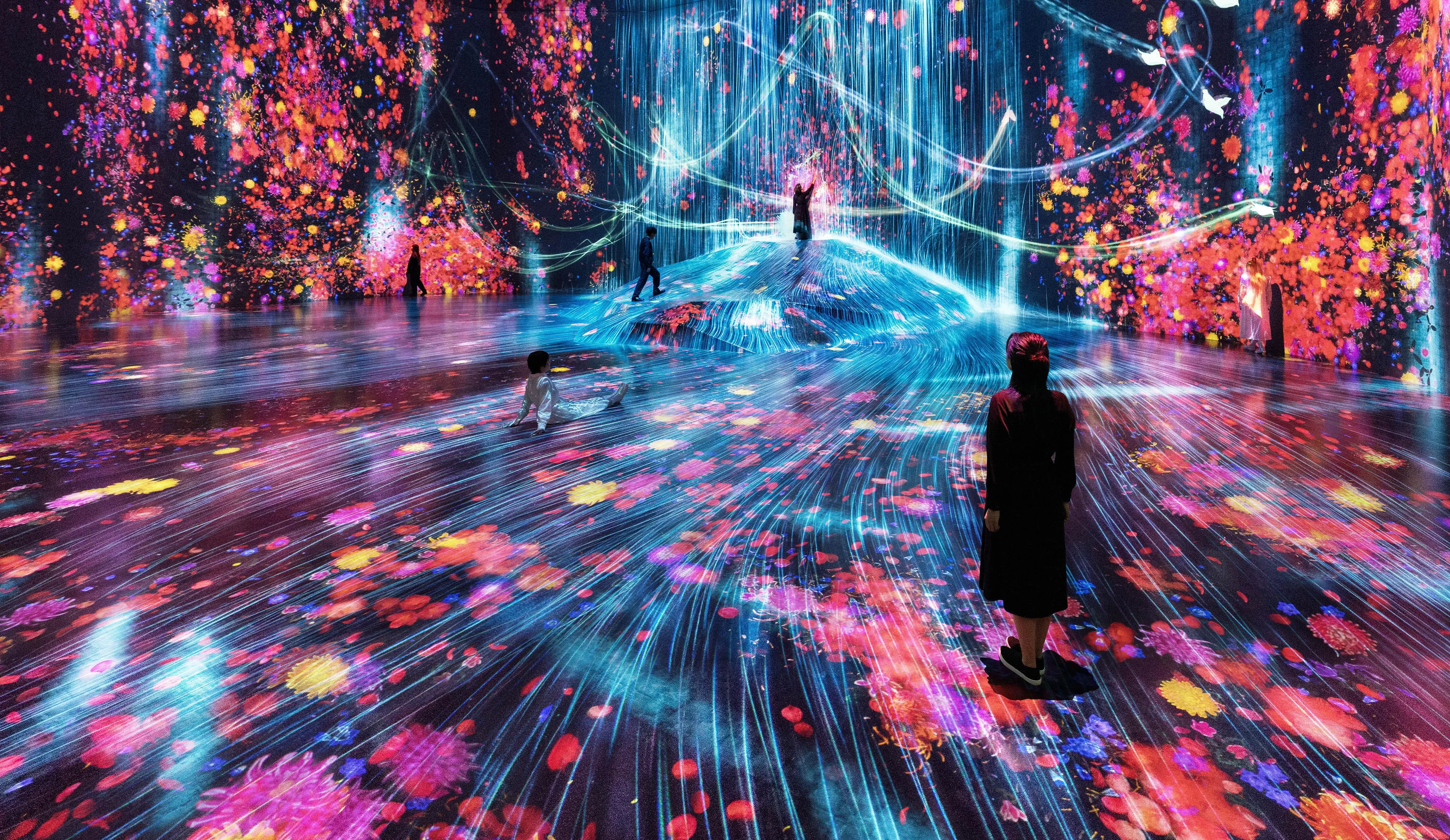teamLab Ruins and Heritage: Rinkan Spa & Tea Ceremony | teamLab
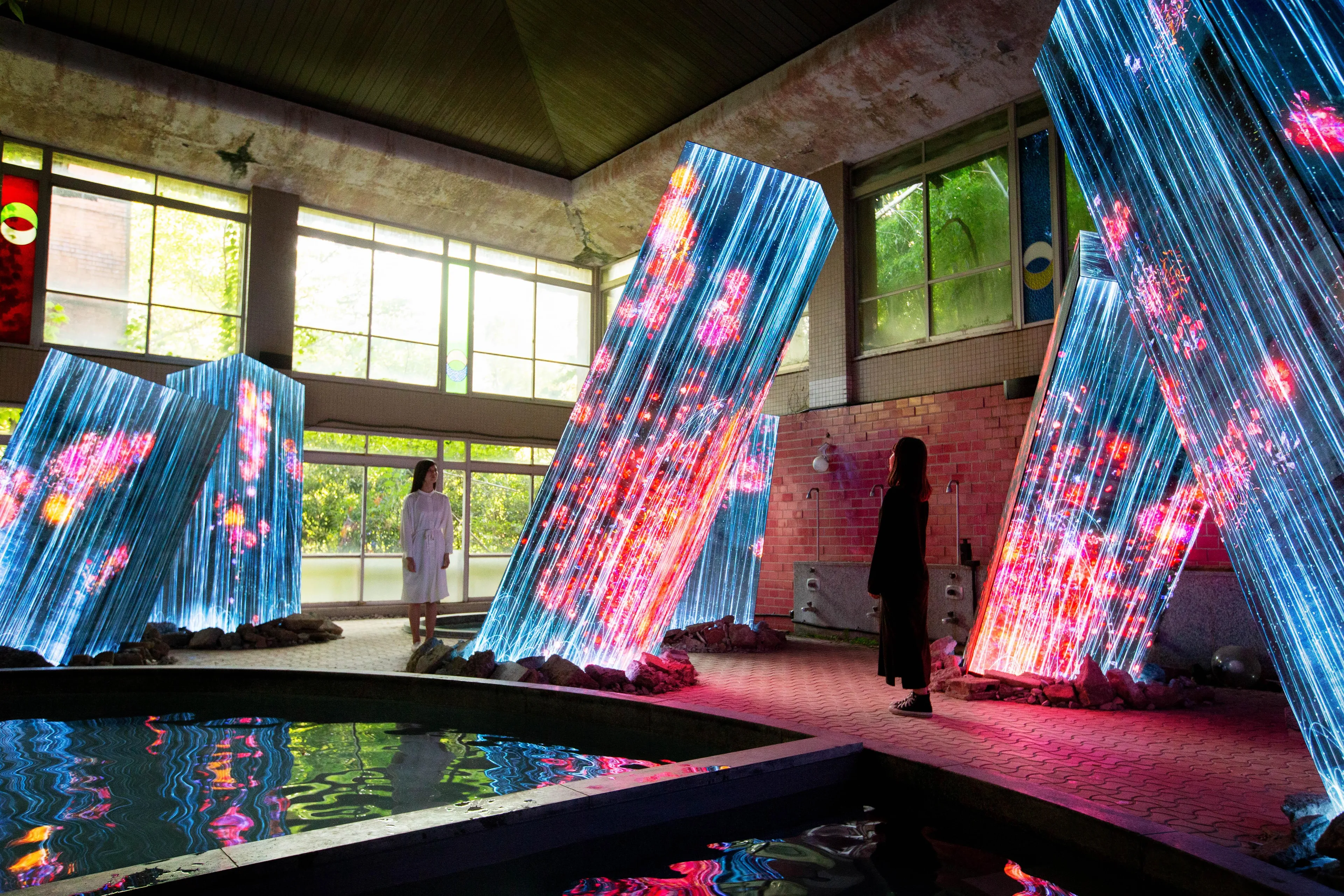

A New Experience of Art and Sauna
within History and the Forest
within History and the Forest
Combo tickets for a day trip to the Mifuneyama Rakuen Hotel Rakan Bath and teamLab’s art in the ruins are available, allowing visitors not staying at the Mifuneyama Rakuen Hotel or Onyado Chikurintei to enjoy a new experience of art and sauna. (*1) There are also tickets available that allow visitors to experience the artworks without entry into the sauna.
(*1) The annual exhibition in the forest teamLab: A Forest Where Gods Live is not currently on view. The exhibition runs annually from July to November.
Exhibition Concept
In the forest where the 3,000-year-old sacred Okusu tree resides, is a cave of five hundred Arhats carved 1,300 years ago by the Buddhist monk Gyoki. (* See Gyoki and the Origins of Japanese Baths (Saunas)) The sauna (alternating hot and cold baths) stands nearby this cave within the historic forest. Visitors can clear their minds, feel the ever-expanding space through their bodies, and immerse themselves in the art and the forest dotted with ruins. As we realize that the mind, body, and environment are the wholeness of our being, we become a part of nature and history, and reconnect with the long continuity of time and the world.
Concept behind Artworks in the Ruins: A Place where Varying Space-Times Intersect
The 500,000 square meter Mifuneyama Rakuen Park was created in 1845, during the end of the Edo period. Sitting on the borderline of the park is the 3,000-year-old sacred Okusu tree of Takeo Shrine, which is Japan’s 7th largest. Also in the heart of the garden is another 300-year-old sacred tree. Knowing the significance of this, our forebears turned a portion of this forest into a garden, utilizing the trees of the natural forest. The border between the garden and the wild forest is ambiguous, and when wandering through the garden, before they know it, people will find themselves entering the woods and animal trails.
Within the forest, there is an enormous megalith, almost supernatural in its formation, known as an iwakura (a dwelling place of a god in ancient Japanese nature worship, or “animism”) that has been preserved as a small shrine. Around the 7th century, a sorcerer named En-no-gyouza-ozunu carved a 23-meter-tall figure over the entire surface of a sheer cliff on Mount Mifuneyama. And 1,300 years ago, the priest Gyoki, who created the Great Buddha in Nara, came to Mifuneyama, carved 500 Arhats and Buddha figures directly onto the rock face of the caves within the forest, which remain to this day. On the edge of the forest, the stone gate of Tsuzaki Castle and other ruins remain within and along the borderline of the forest.
We exist as a part of an eternal continuity of life and death, a process which has been continuing for an overwhelmingly long time. It is hard for us, however, to sense this in our everyday lives, perhaps because humans can not recognize time longer than their own lives. There is a boundary in our understanding of the continuity of time.
The forest is home to a 3,000-year-old tree, and it changes daily with the imperceptible, slow flow of time, repeating every year, as a space where the endlessly long time accumulates. The ruins from ages past scattered in the forest and the Edo-period garden which remains today each have their own respective space-times. The bath house in the garden was constructed in modern times, but after just a short period, it was abandoned, becoming a space where time had stopped completely.
Within the space of the ruins of Mifuneyama Rakuen, we make artworks with their own, separate space-times, thereby creating a place where these varying spaces intersect and overlap, allowing us to transcend the boundary in our understanding of the continuity of time.
Gyoki and the Origins of Japanese Baths (Saunas)
Gyoki (668 - 749), who carved the five hundred Arhats in Mifuneyama, was a monk during the Nara Period. Later, he became the first Buddhist priest of the highest order in Japan and built the Great Buddha in Nara. In Todaiji Temple, where the Great Buddha is housed, there was a bathhouse called Oyuya, which had a steam room (sauna) and a washroom where common people could bathe. It is said to be the first kudokuyu or “hot water alms” (a pious act to provide common people with a bath), and the beginning of bathing in the city. Baths in that era were steam baths (saunas).
Japan at the time sought to stabilize its national government through the teachings of Buddhism and built temples throughout the country. For temples that were responsible for spreading Buddhism throughout Japan, the kudokuyu became an important means of gaining support from the people, and before long, many temples other than Todaiji came to offer it as well.
Empress Komyo (701 - 760) is said to have been the originator of the practice of bathing, and Gyoki, who was born 33 years earlier, is said to have handed down the same bathing legends as Empress Komyo. The Tsukahara no Karafuro, one of the oldest existing saunas in Japan, is said to have been built by Gyoki, an ascetic who traveled all over Japan before building the Great Buddha in Nara, hoping to cure people of their illnesses. From this, it can be inferred that Gyoki was the first person to introduce baths (saunas) to the people. And it could be said that baths (saunas) drew people to the temples, helping to spread Buddhism and establishing the nation of Japan.
Historical Background of Art and Sauna: Rinkan-Chanoyu
The Japanese custom of seyoku (the practice of providing temple baths for the poor, the sick, and prisoners) began during the Nara Period, when Gyoki was active, and reached peak popularity in the Kamakura Period. Even during the Muromachi Period, the practice of seyoku was continued by the shogunate and various temples.
Seyoku also became popular among individuals. Starting at this time, inviting people over and providing baths became known as furo (bathing), and bathing (at the time in steam baths, or saunas) was done in a variety of ways, with tea ceremonies or food and drink served afterward. This was the so-called furo-furumai (bath hospitality).
In the middle of the Muromachi Period (1336 - 1573), a type of tea ceremony in which tea was served to guests after their baths was called rinkan-chanoyu (rinkan sauna and tea ceremony). Much like with shoin-cha (decorative tea time), paintings, incense burners, vases, and hanging scrolls were displayed in the bathing rooms, and it is said that many spectators came to watch toucha (tea-tasting games) after bathing.
Rinkan-chanoyu was a widely-practiced basara (eccentric hobby) in Japan, particularly at the Kofukuji Temple in Nara.
In those days, a bath was a steam bath, or what we would today call a sauna, in which water is poured over heated sauna stones. People in Japan have long enjoyed the acts of viewing art in a sauna and drinking tea as a cultural pastime.
The term basara refers to the social and cultural trends in the middle ages in Japan, mainly during the early Muromachi Period (the Nanboku-cho Period). It was an aesthetic of meritocracy, one that disregarded the status quo, belittled, ridiculed, and rebelled against the authority of those noble in name alone, and instead favored extravagance, flamboyant behavior, and chic clothing. This culture was also the seed of the later revolutions in the Warring States Period.
It is said that Murata Juko (1422 - 1502), the teacher’s teacher of Sen no Rikyu (1522 - 1591) and the inventor of wabi-cha (tea ceremony), was also enamored with rinkan-chanoyu when he was young. He later studied under the Japanese monk Sosun Ikkyu at Daitokuji Temple, reached a state of chazenichimi (the realization that tea ceremony and Zen are one), and created wabi-cha. Then, the brothers Furuichi Tanehide and Furuichi Choin, who were main figures of rinkan-chanoyu, became disciples of Murata Juko, and rinkan-chanoyu became wabi-cha.
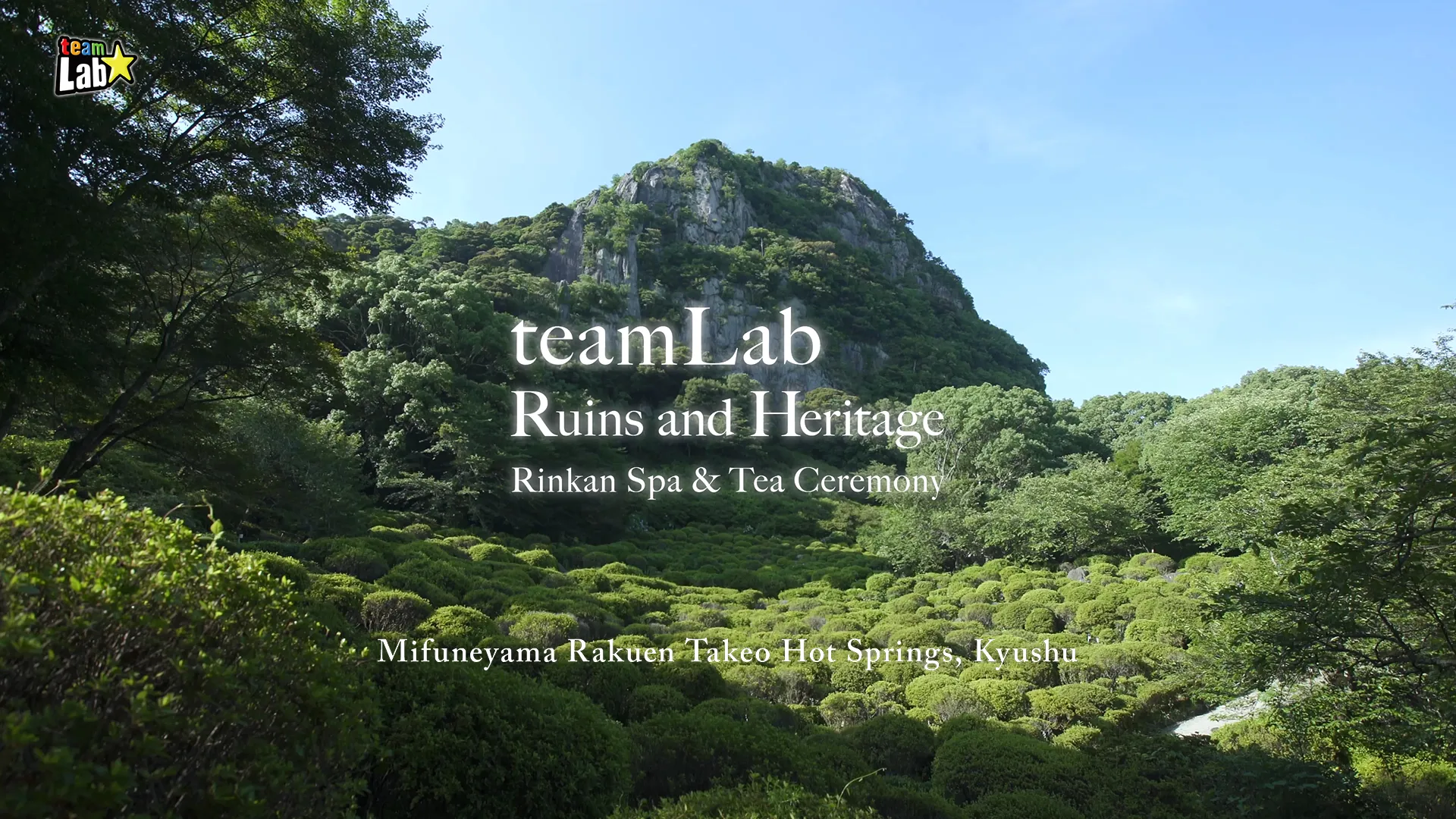
藝術作品
EN TEA HOUSE
Ruins and Heritage
Tea House
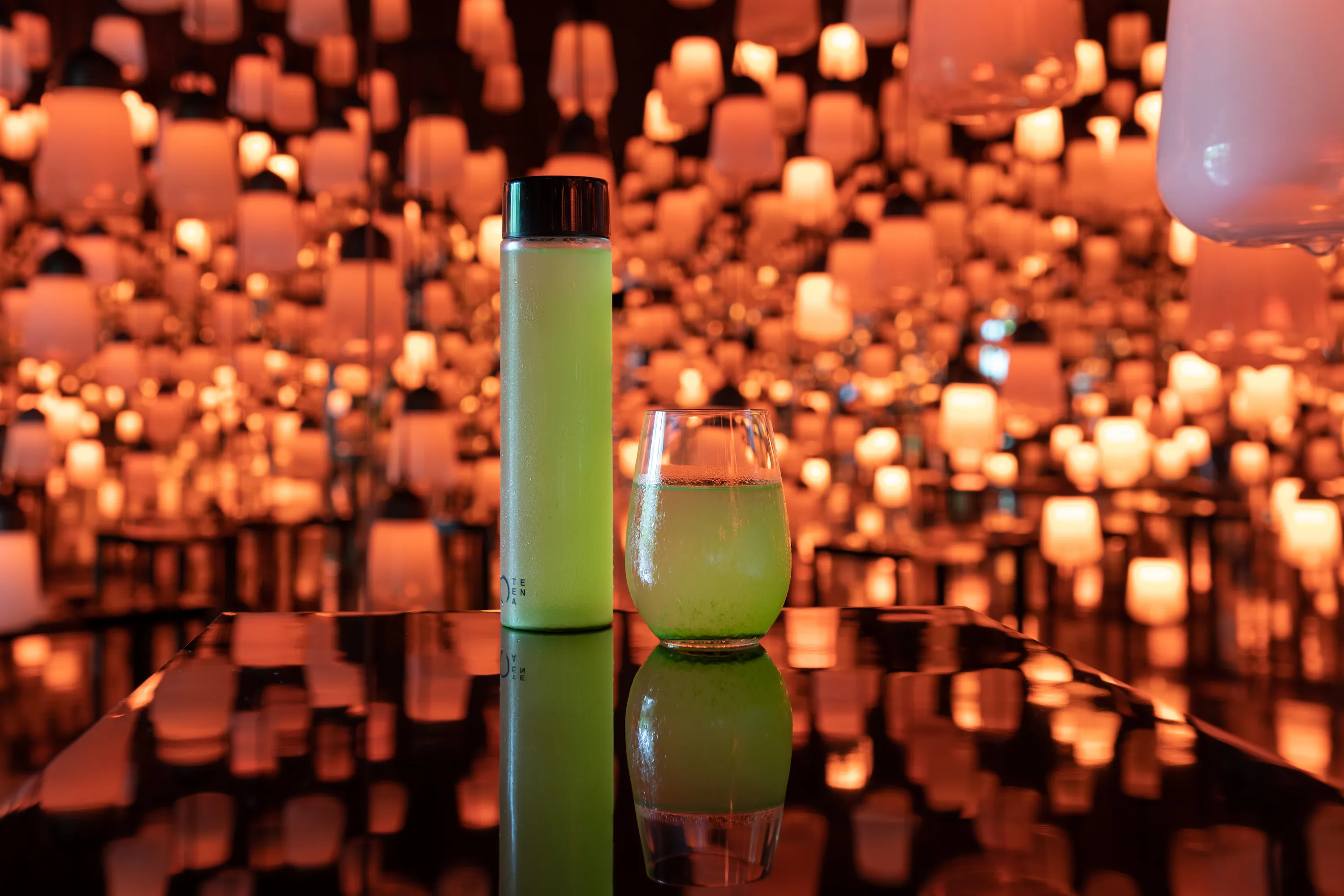
Reservation required / fixed capacity
The large communal baths at Mifuneyama Rakuen Hotel have been completely renovated (both men's and women's). The men's bath now has a dry sauna where guests can enjoy löyly (pouring hot water on sauna stones to produce steam, uses natural water from Mt. Mifune and roasted tea from Ureshino, Saga). The men's bath also has a cold water bath with hot spring water cooled to 16 degrees Celcius, and a large open-air bath/bathing space surrounded by the nature of Mt. Mifune.
The women's bath is also now equipped with a dry sauna, allowing guests to enjoy löyly (uses natural water from Mt. Mifune) and Kugel (aroma balls that produce a scent when on top a sauna stove). It also has a cold water bath with hot spring water cooled to 17 degrees Celcius, a steam sauna, a cafe (has homemade pudding, detox water, etc.), and an open-air bath/bathing space surrounded by the nature of Mt. Mifune. We hope you will enjoy a relaxing time in our baths while gazing at Mt. Mifune's beautiful nature.
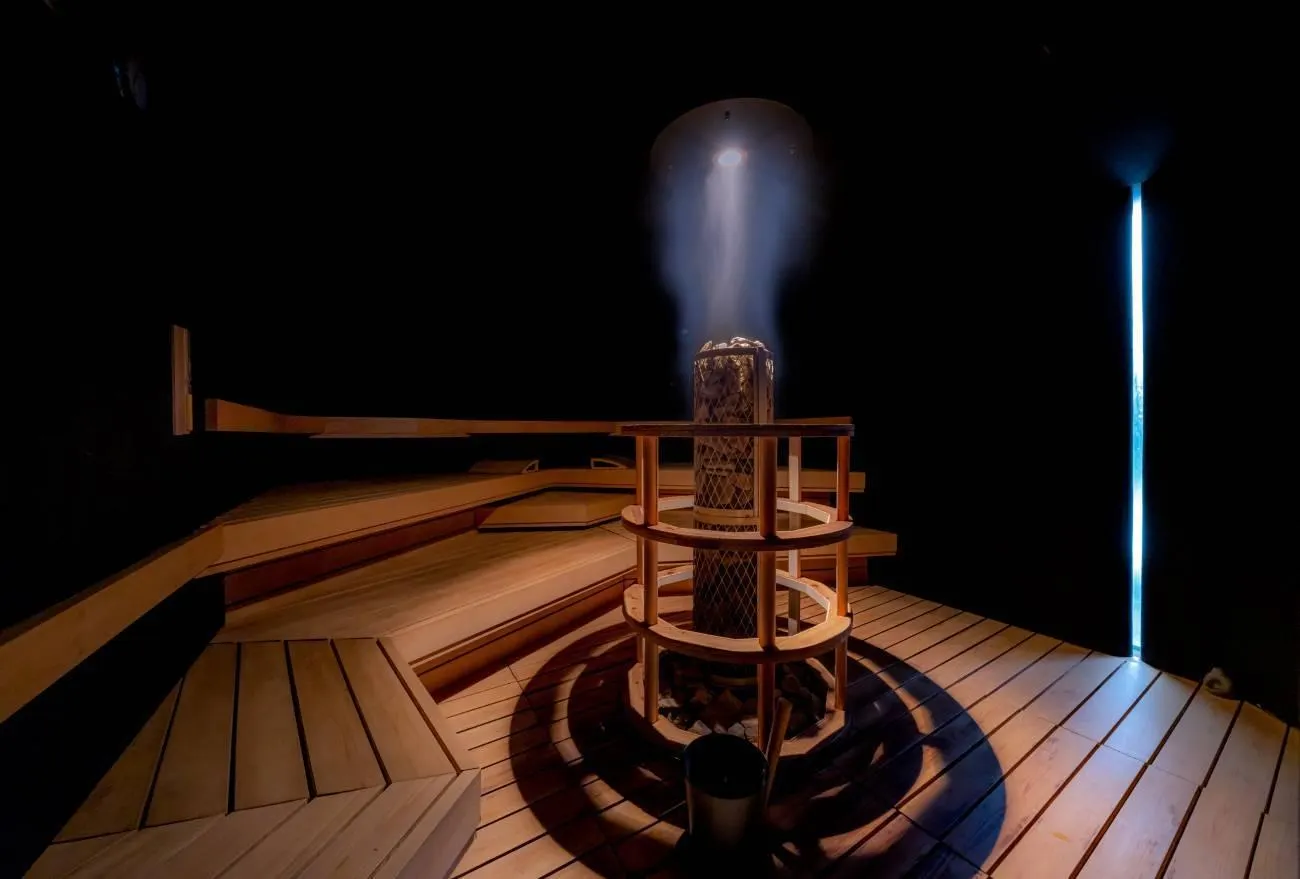
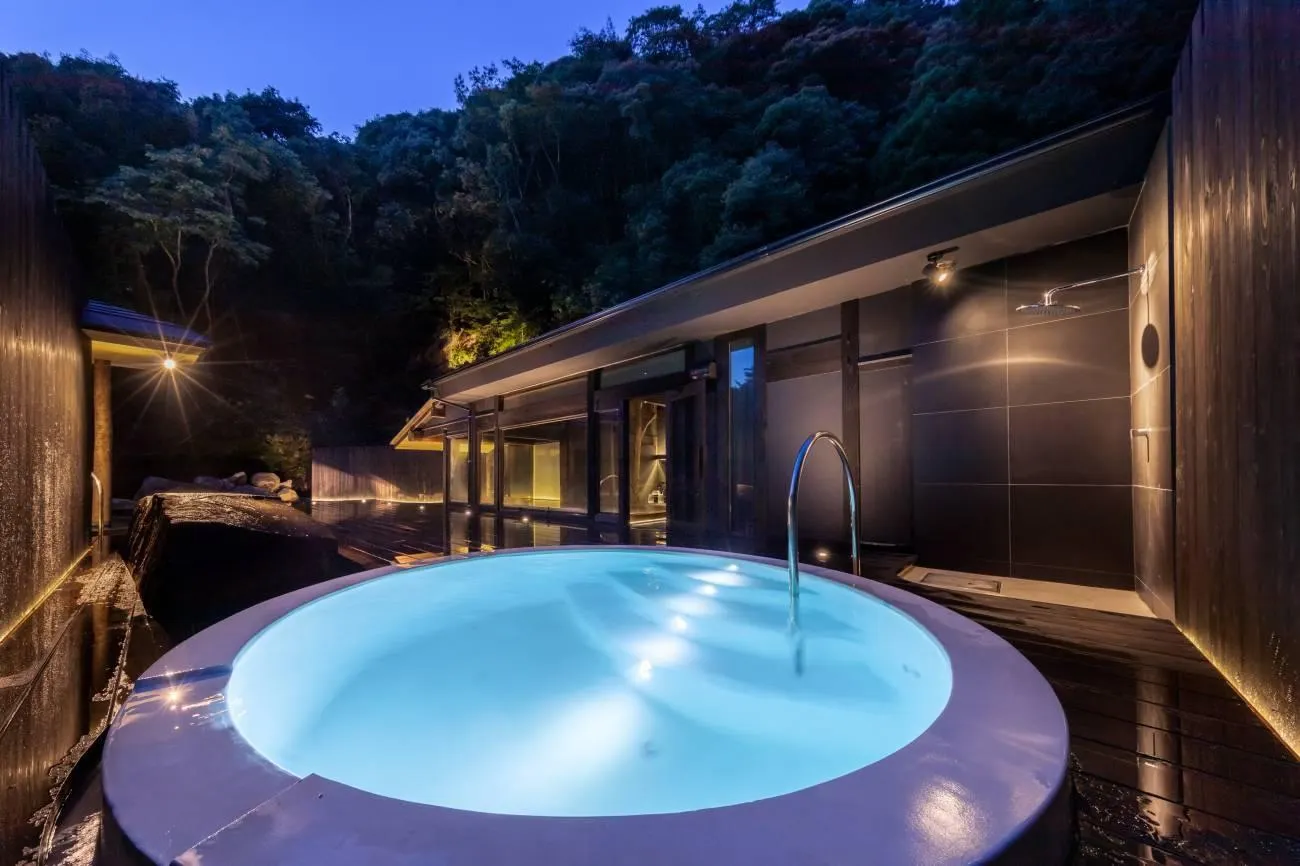
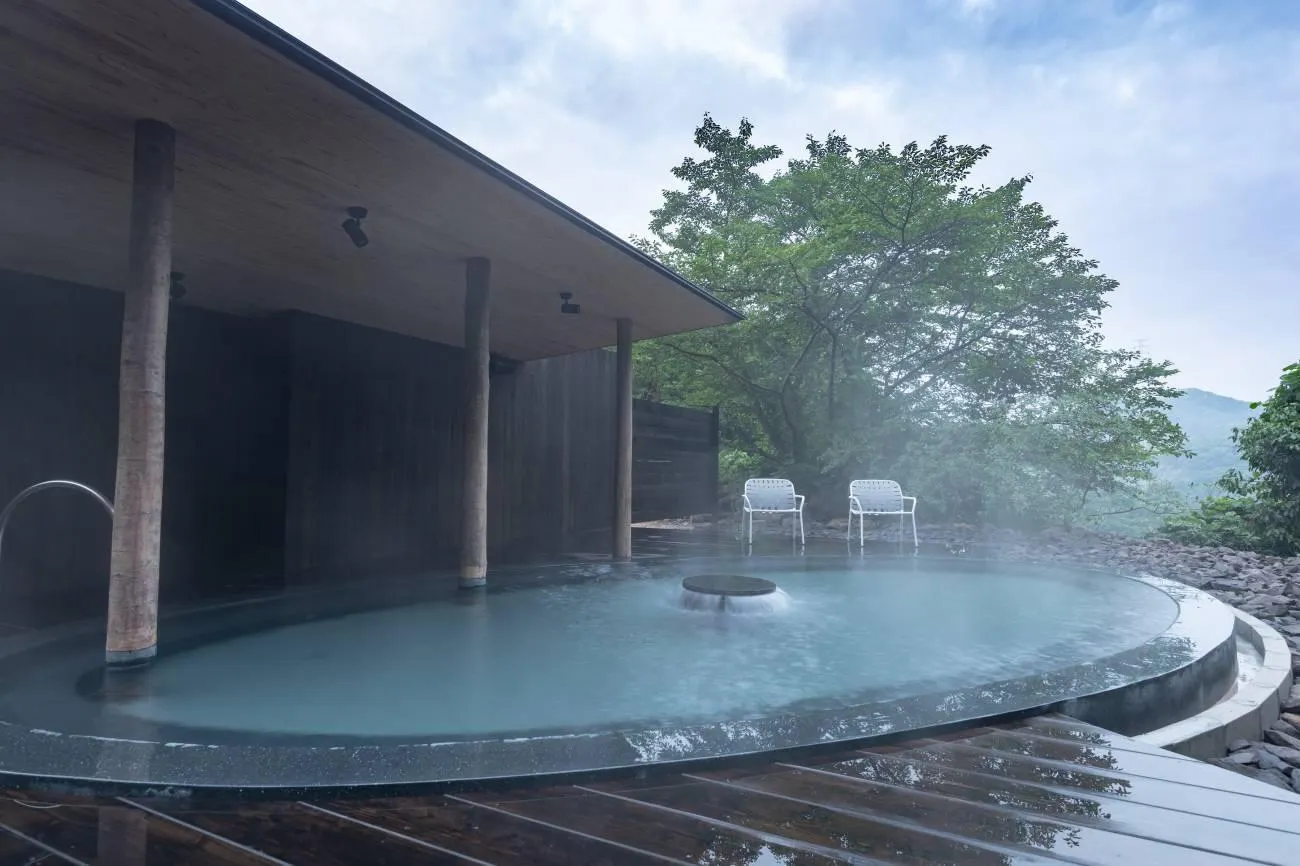
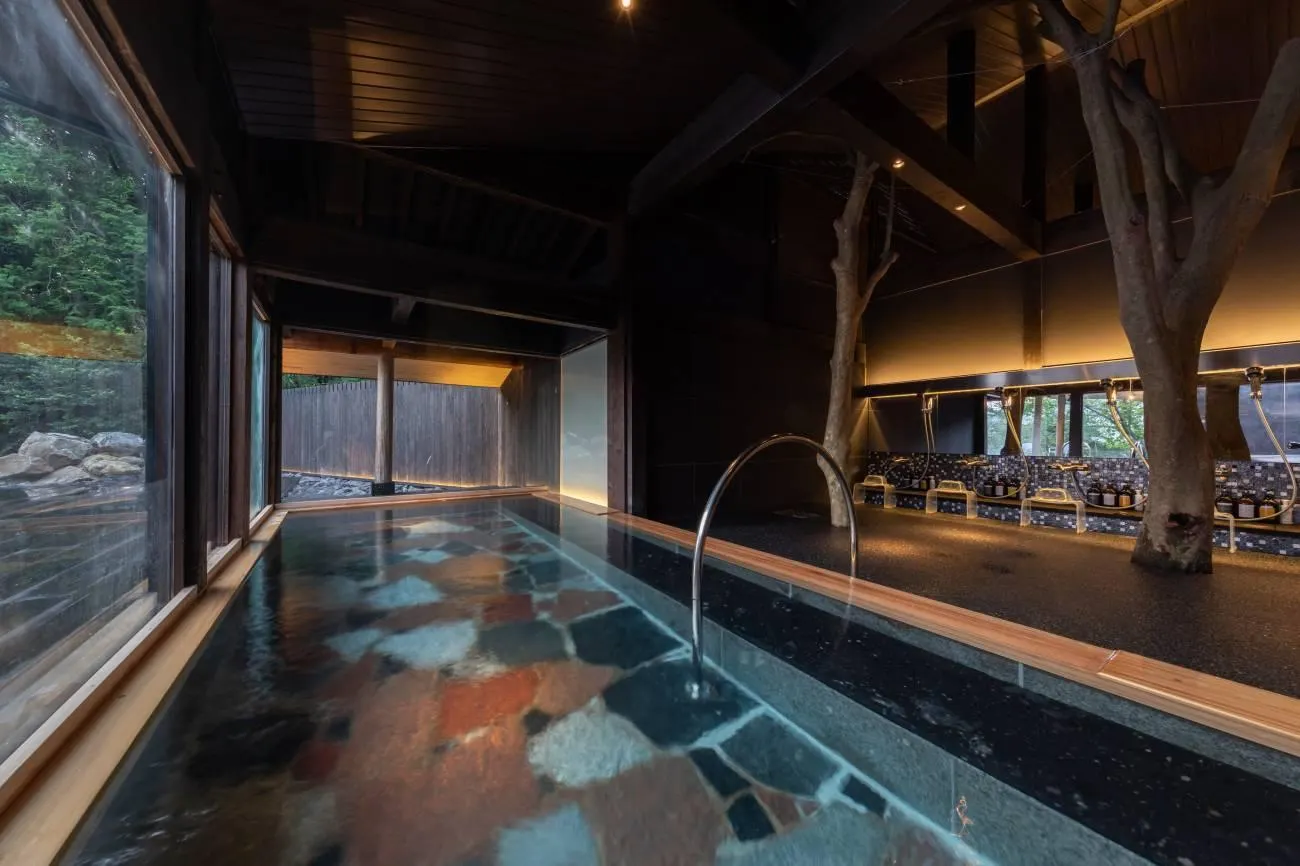
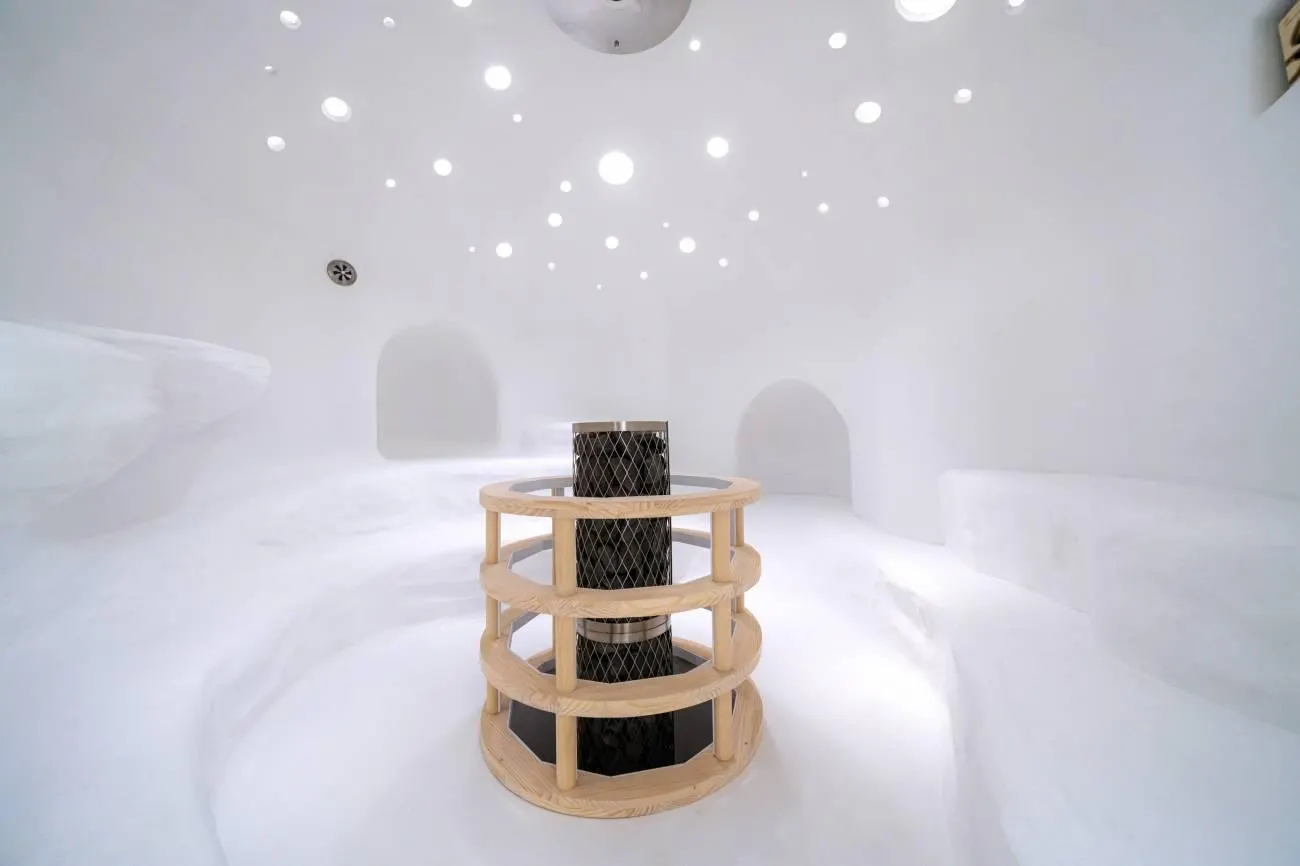
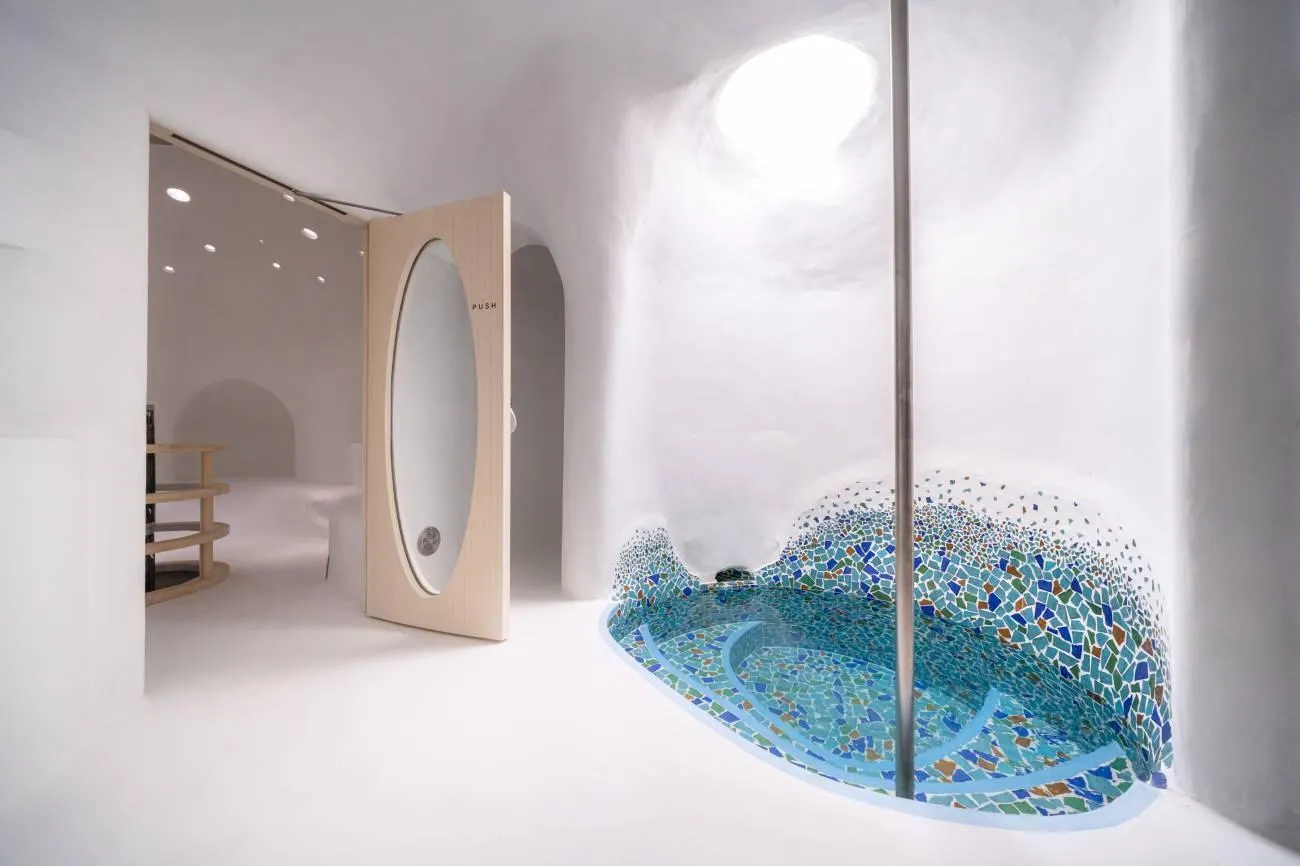
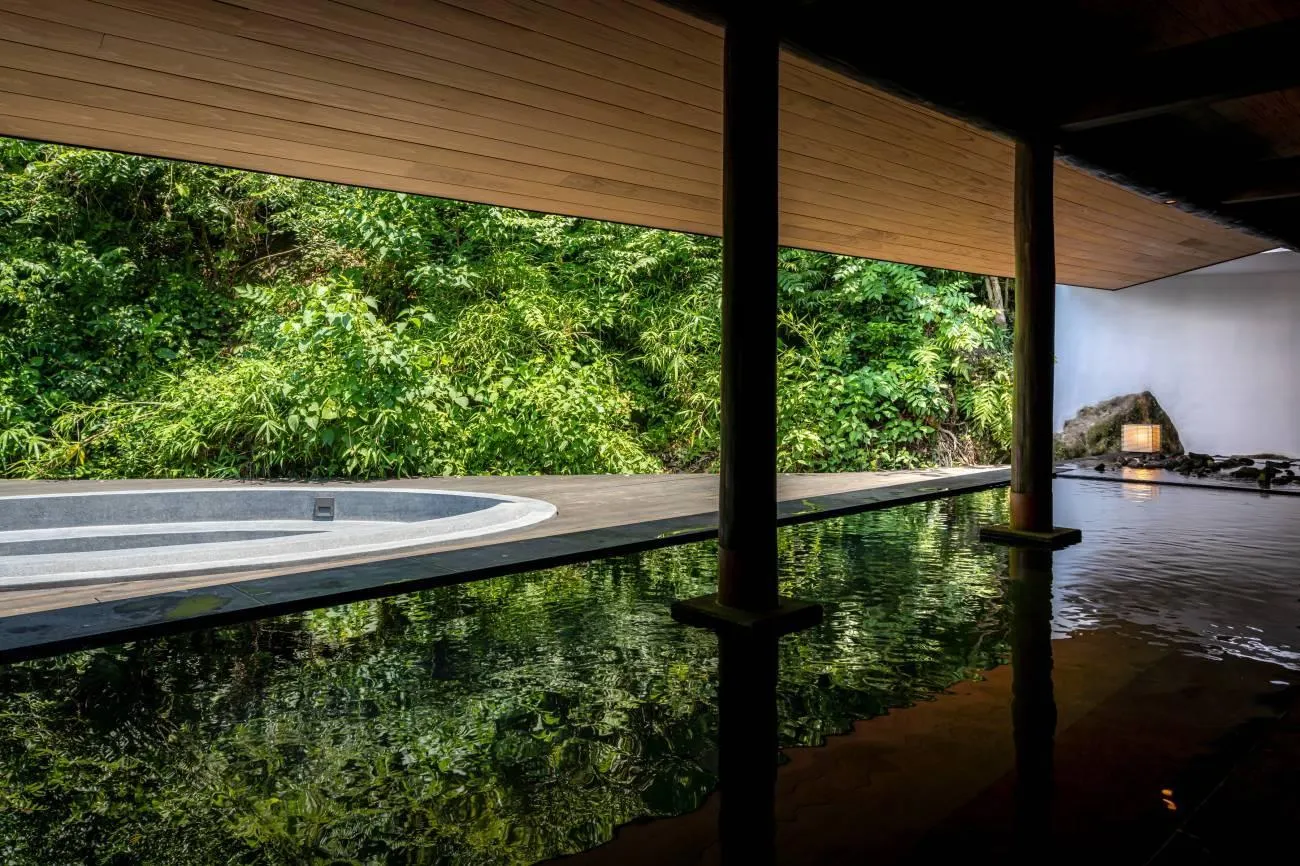
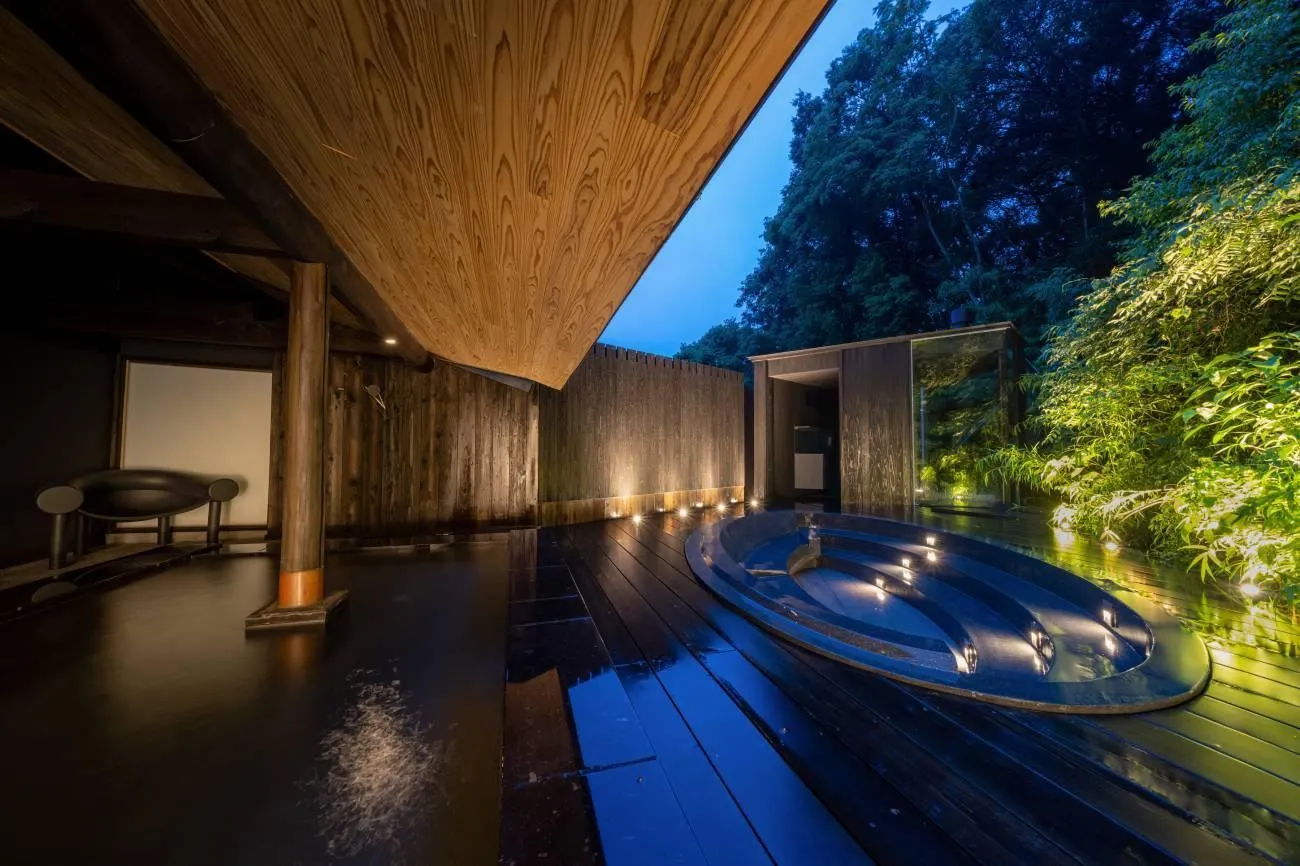
Map
App
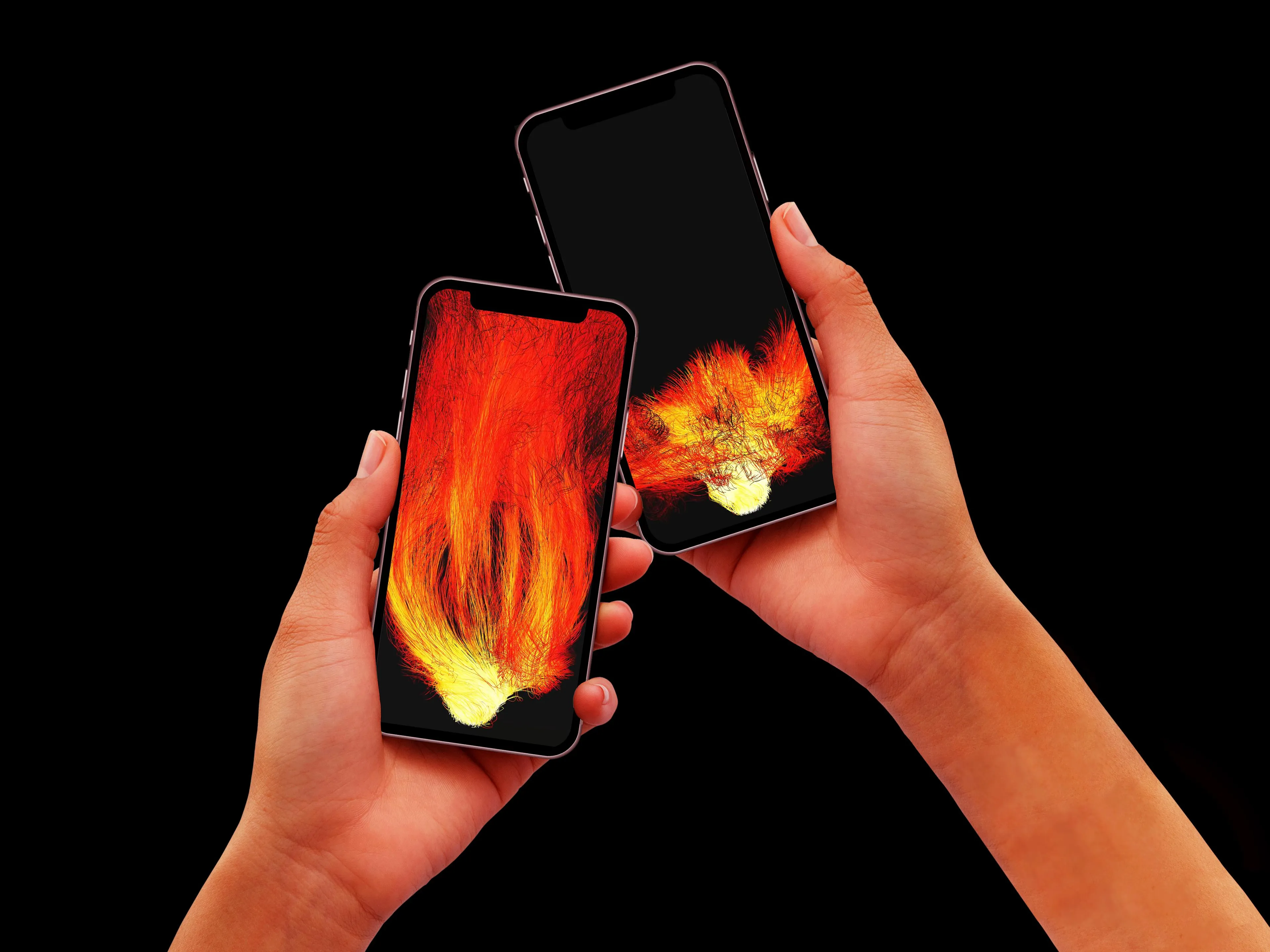
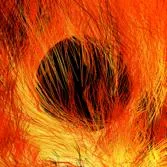
Distributed Fire
點燃火焰
當您啟動此應用程序、並接近作品《Universe of Fire Particles in a Decaying Underground Passage》時,您的火焰將被會點燃,您就可以將藝術品帶回家。
分享火焰
如果您使用該應用程序接近其他人,您還可以與他們分享您的火焰。
觀看火焰地圖
被廣泛傳播的火焰群體,以及您自己傳播出去的火焰,會在軟件裡描繪出一幅地圖。
參觀指南
會場資訊
展期
時間
11:00-22:00
* 最後入場時間為21:30
禦船山樂園大浴場“羅漢之湯”一日遊入浴
預約制 / 定員制
第1批: 8:00 - 10:30 (最多 15名男性/10名女性)
第2批: 15:00 - 17:30 (最多 15名男性/10名女性)
第3批: 17:30 - 20:00 (最多 15名男性/10名女性)
第4批: 19:30 - 22:00 (最多 15名男性/10名女性)
第5批: 21:30 - 24:00 (最多 15名男性/10名女性)
----------
* 不可過夜。
* 11:00-22:00期間可隨時入場。
* 16歲以下兒童不可使用本套票。
* 謝絕同性別4人以上的團隊顧客。
* 請通過電話或官方售票網站進行預訂。
關於御船山樂園的開放時間
因季節而異,具體請查看御船山樂園網站。
休息日
2025年12月31日
2026年1月1日
2026年1月2日
2026年1月3日
交通指南
地址
佐賀縣武雄市武雄町大字武雄4100
聯系我們
Inquiry on tickets
Tel
Mifuneyama Rakuen Hotel
門票
票價資訊
JPY 4,450
JPY 700
JPY 400
免費
購票
注意事項
關於入境
根據人群的不同,可能會限制進入。由於時間限制,如果您的組中的訪問者數量突然增加,則可能無法允許進入。
輪椅和嬰兒車訪問
花園擁有自然小徑,可能很難通過輪椅或嬰兒車進入。
・"呼应灯森林與螺旋 - 一笔"
責任
對於個人物品的任何傷害,丟失或損壞,主辦方不承擔任何責任。
垃圾免費公園
為了保護環境,這個公園不提供垃圾桶。準備好把垃圾帶回家進行處理和回收。
禁止抽煙
所有公園和自然區域都嚴格禁煙和無菸。
服裝
這個公園有陡峭的山坡和自然小徑。建議遊客穿著合適的衣服和鞋子。
不准帶寵物
公園內不允許攜帶寵物。歡迎服務犬。
由於天氣導致展覽暫停或延遲
如遇大雨和/或風,展覽將暫停。有關詳細信息,請查看官方網站,Facebook或Instagram。
攝影與攝像
禁止在公園內使用閃光燈,無人機和/或三腳架。
其他
進入本次展覽,即表示您同意由官方攝影師和攝像師拍攝您的圖像。主辦單位或當地宣傳單位可以在新聞材料,宣傳材料,網絡和其他財產上使用由此產生的材料,包括靜態照片,錄像和錄音,不受限製或經濟補償。
<禦船山樂園大浴場“羅漢之湯”使用時的注意事項>
本館禁止以下客人當天往返入浴,敬請諒解。
* 同性4人以上的團隊
* 中學生以下當天往返入浴
* 被認為是黑社會相關人員、反社會團體或組織的相關人員
* 有紋身的人
* 酒醉的人(過度飲酒的人)
* 大聲喧嘩的人
* 有皮膚病或可能有其他傳染病的人、醫生要求禁止入浴的人
* 發熱、嚴重體虛、咳嗽、呼吸困難等患有呼吸道疾病的人、或其他身體不適的人
* 有打擾其他客人的行為、被認為危險的行為、不衛生的行為的人
* 被認為不符合使用本館條件的人
主辦單位
teamLab
附近的展覽
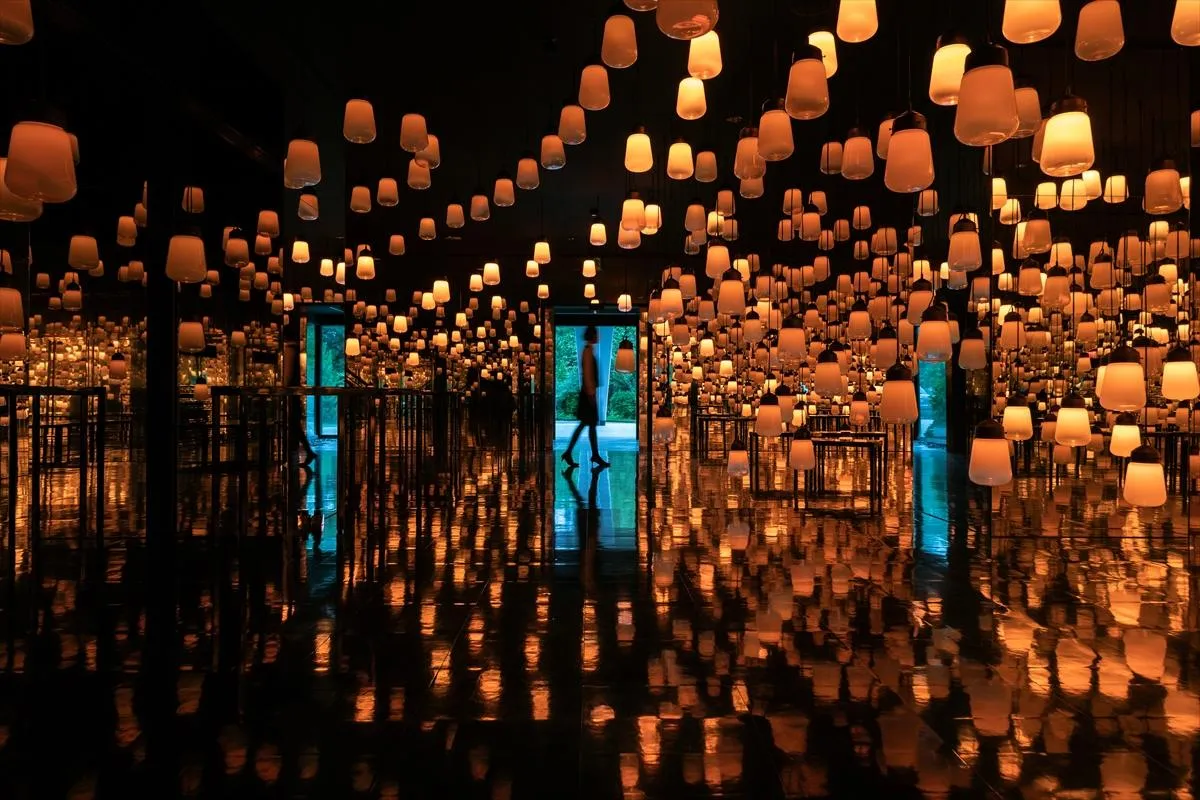
2018.7.19(Thu) -
禦船山樂園酒店, 武雄溫泉, 九州
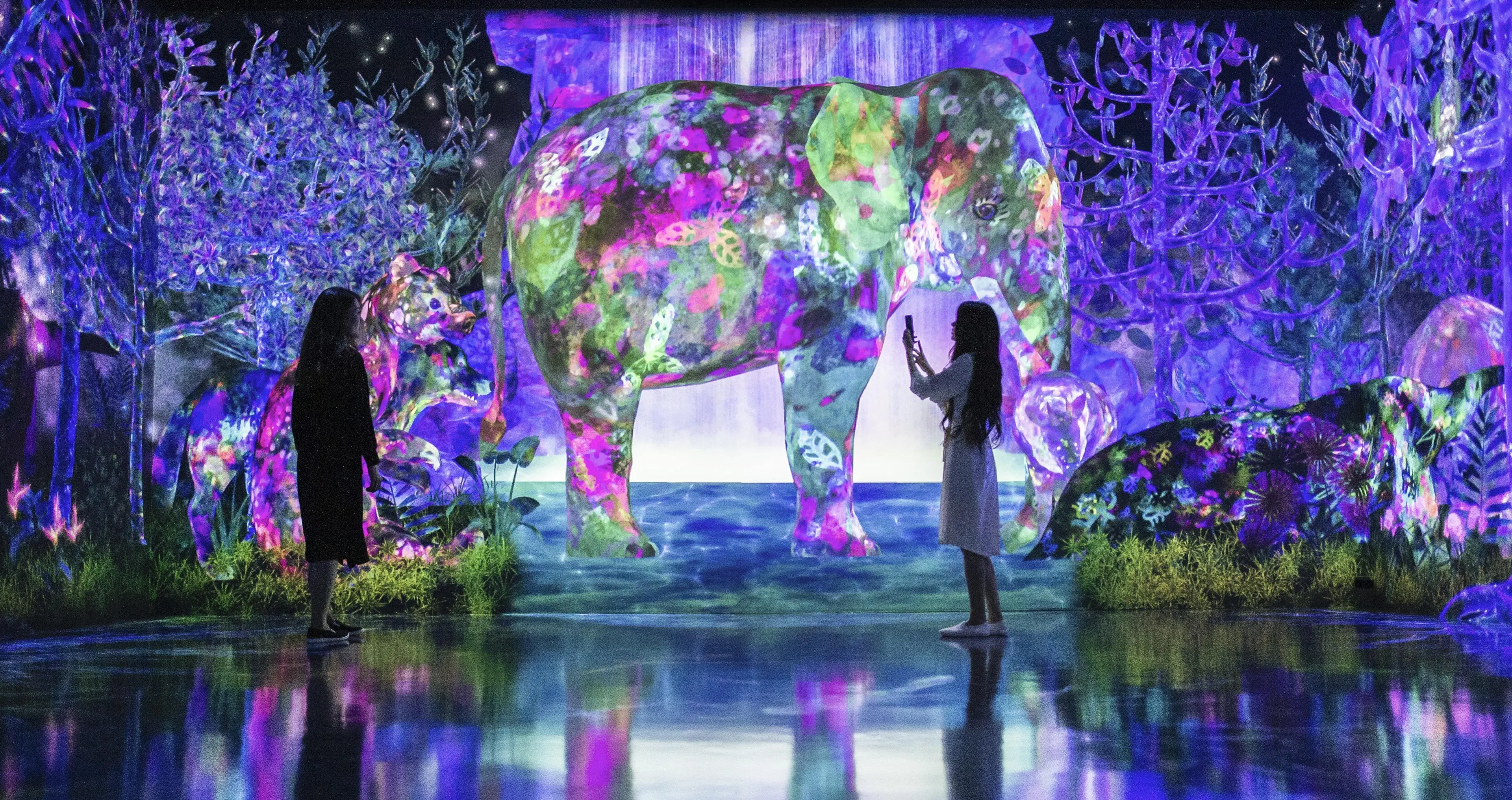
2020.7.21(Tue) - 常设
在MIZUHO PayPay Dome FUKUOKA旁邊, 福岡
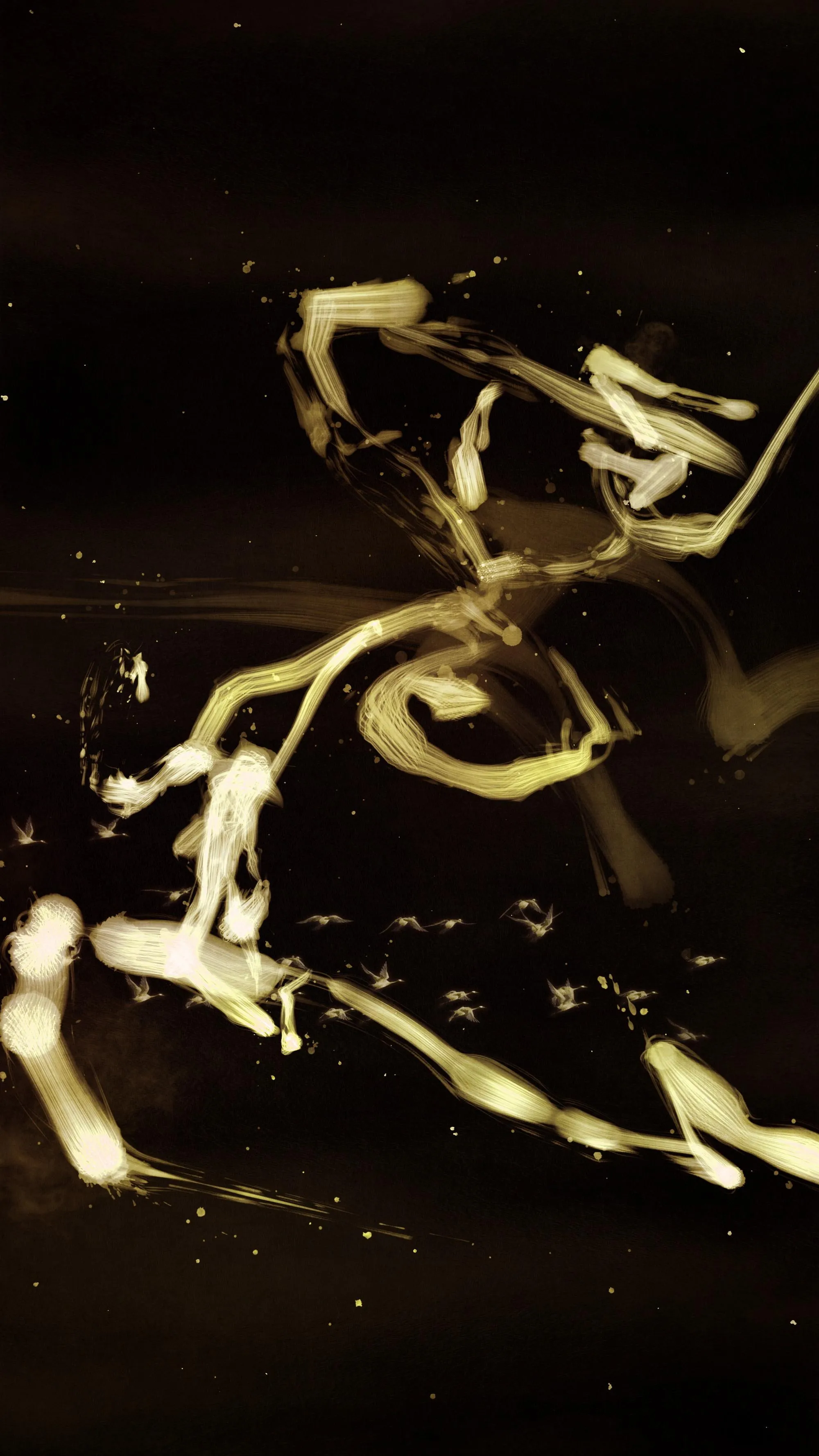
2017.3.30(Thu) - 常设
Fukuoka Airport Domestic Terminal JAL DP · Sakura Lounge, 福岡
